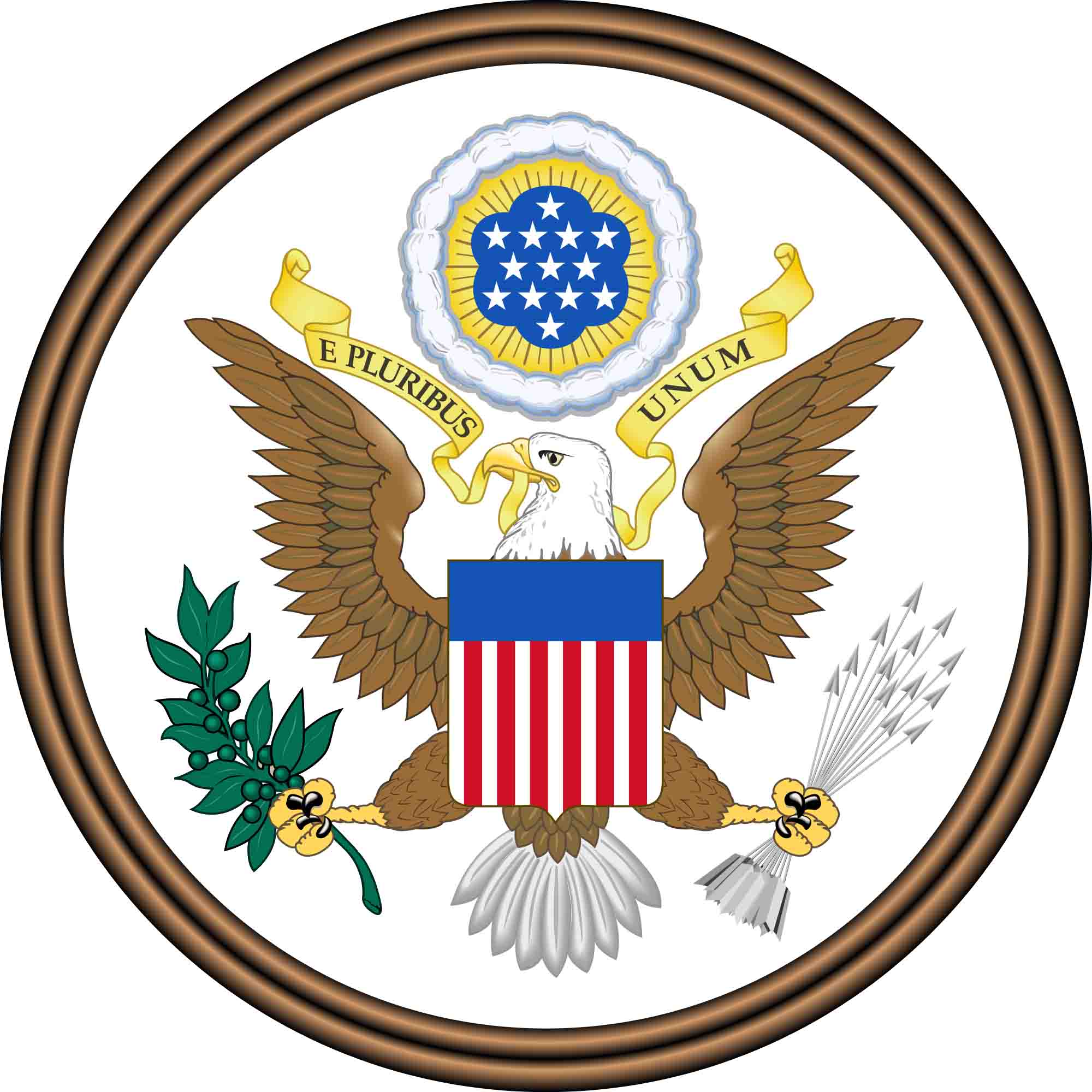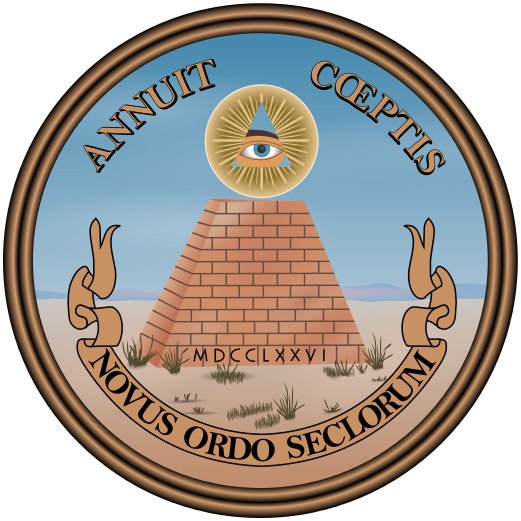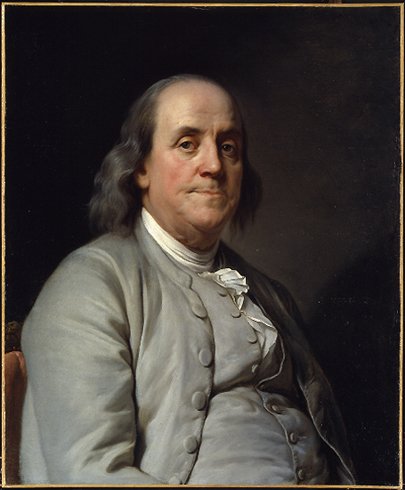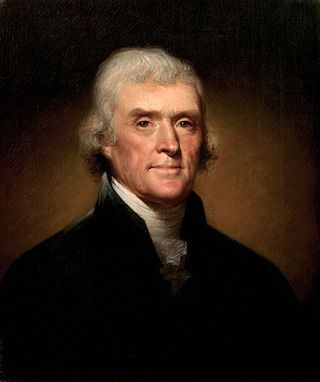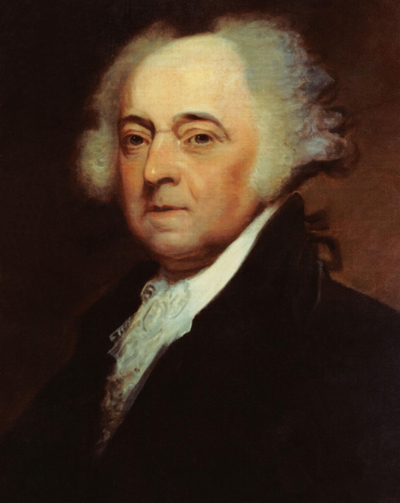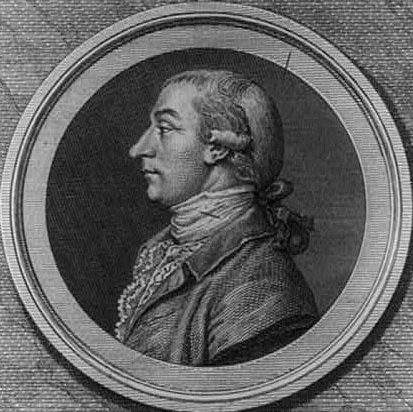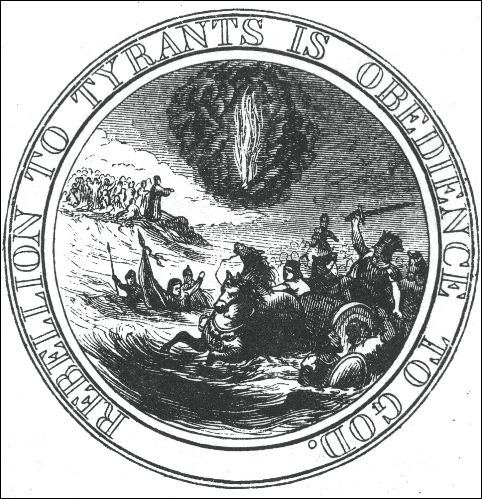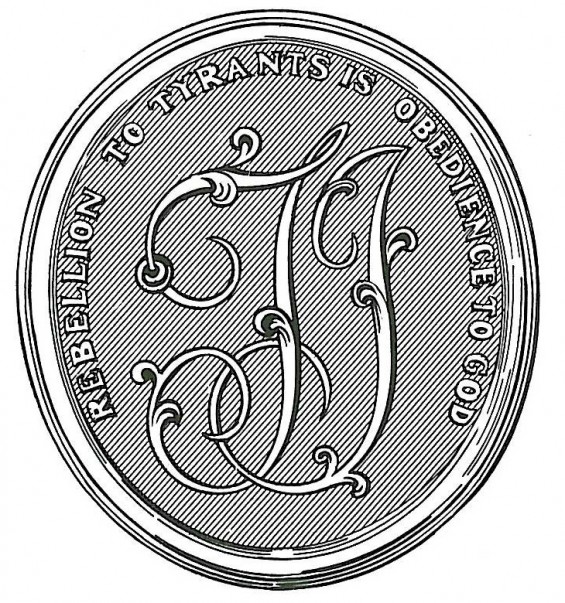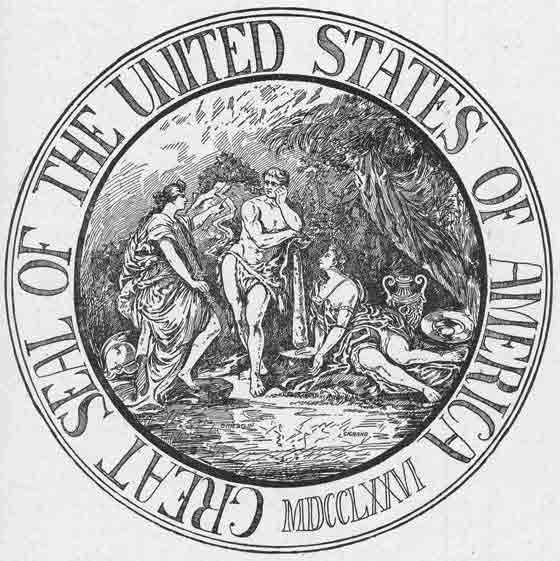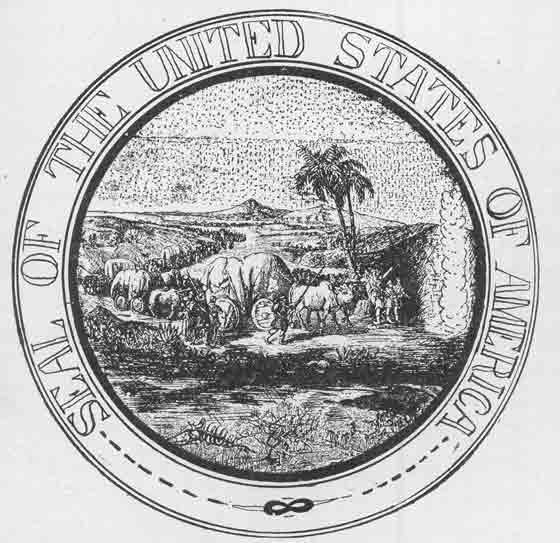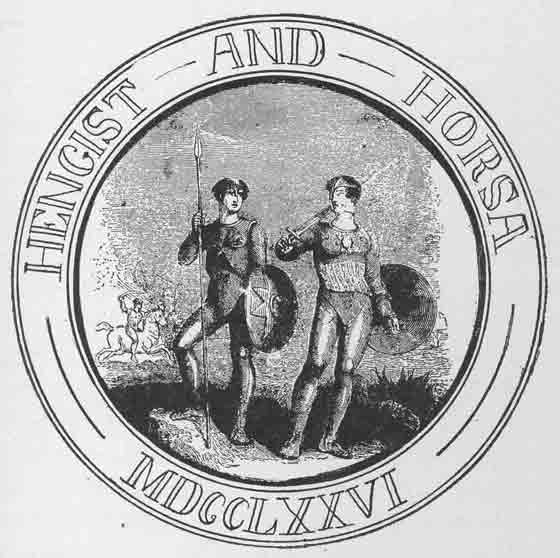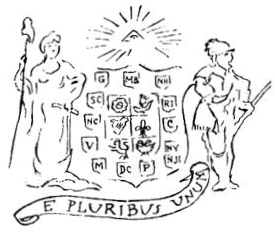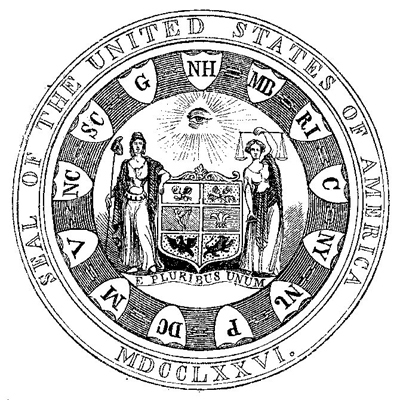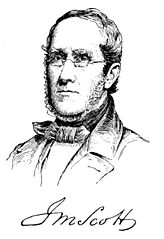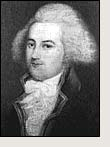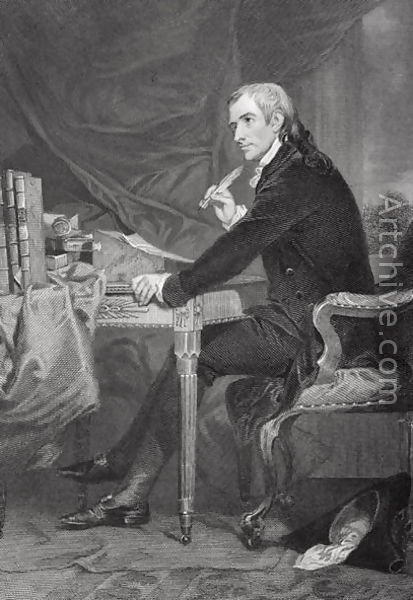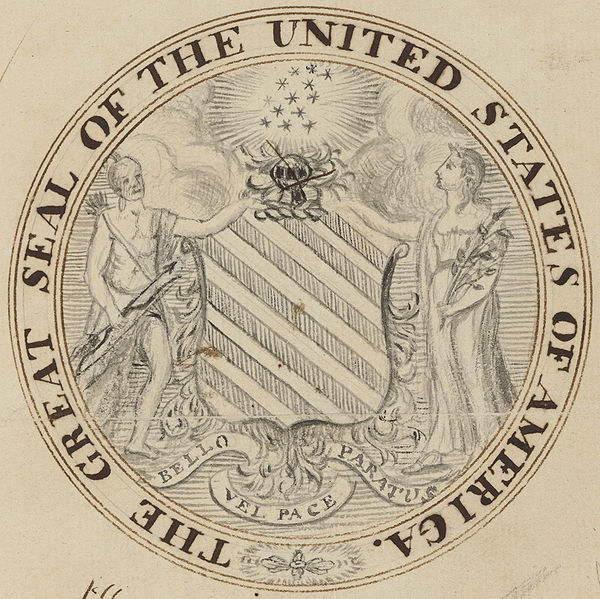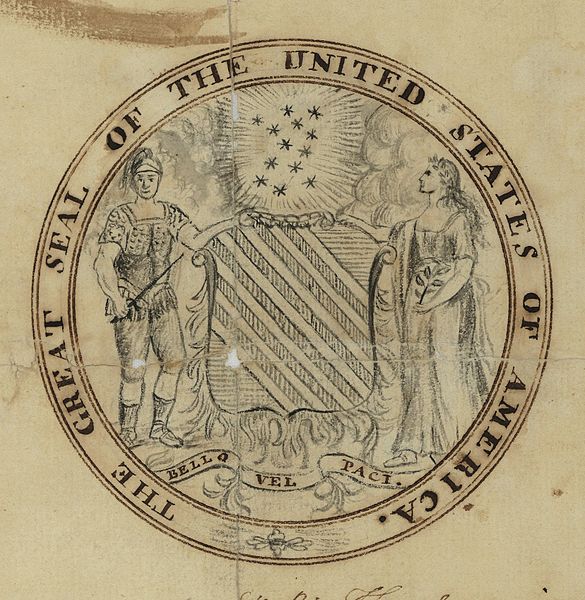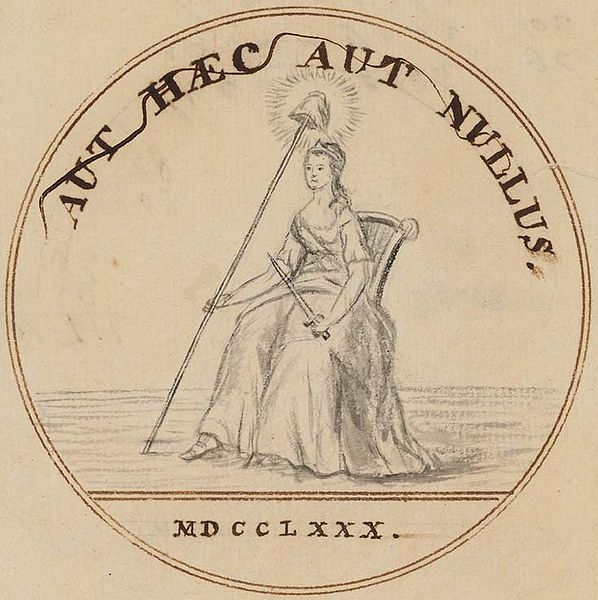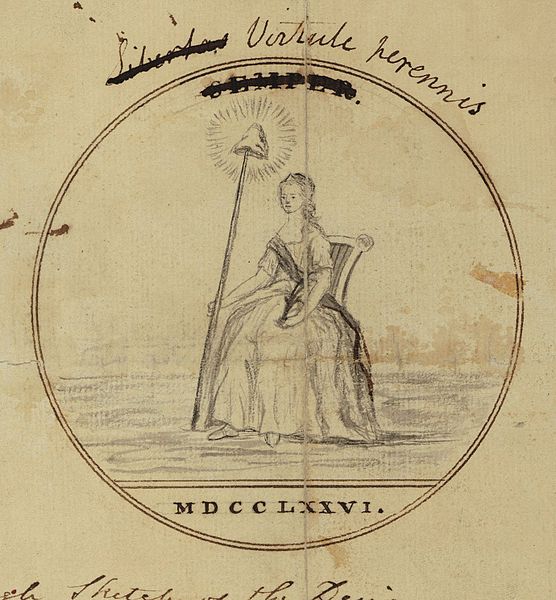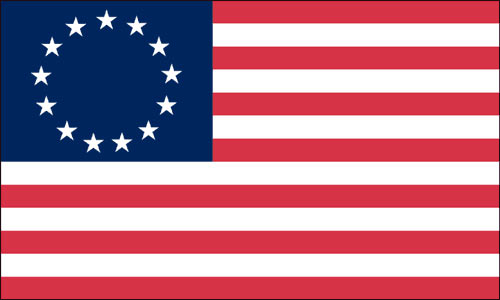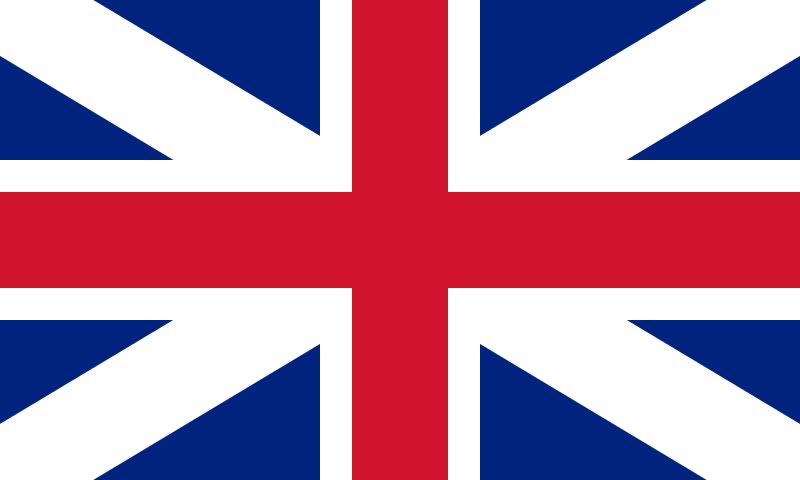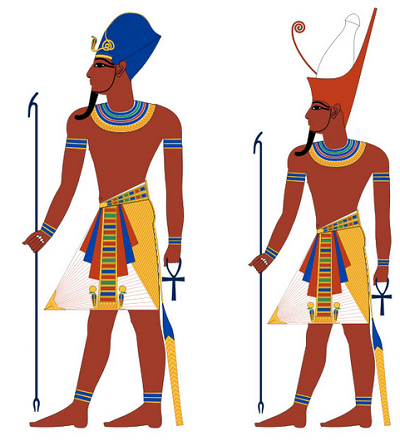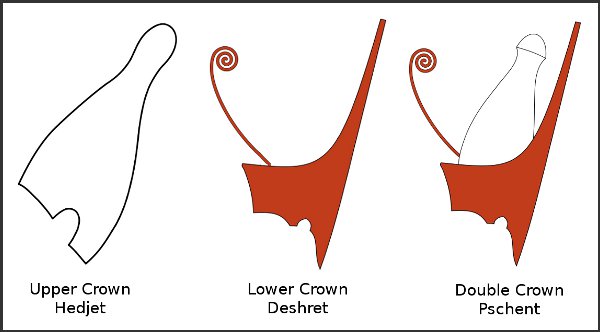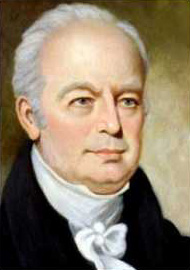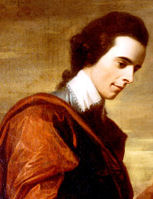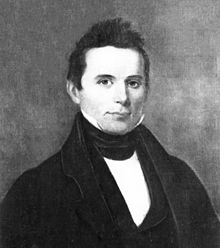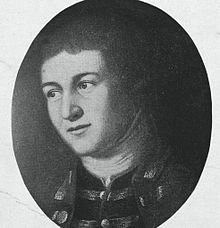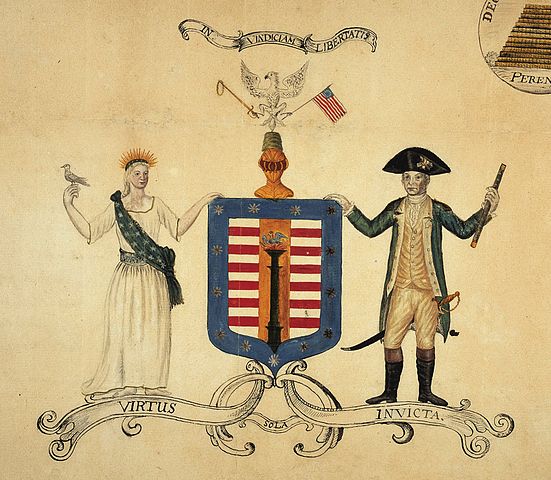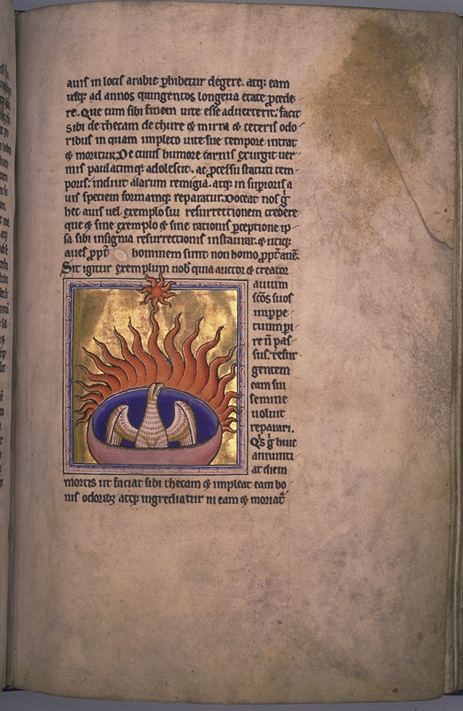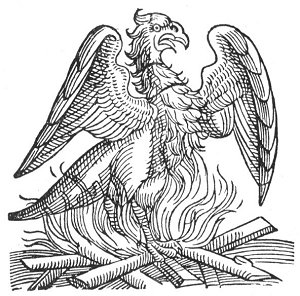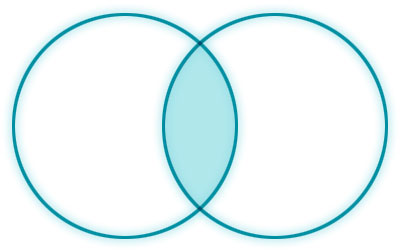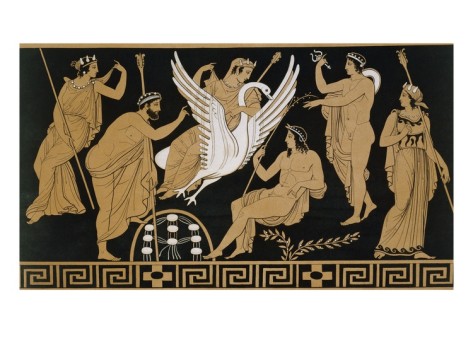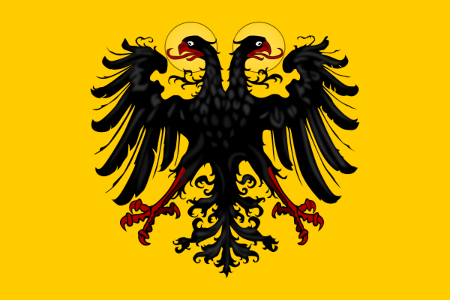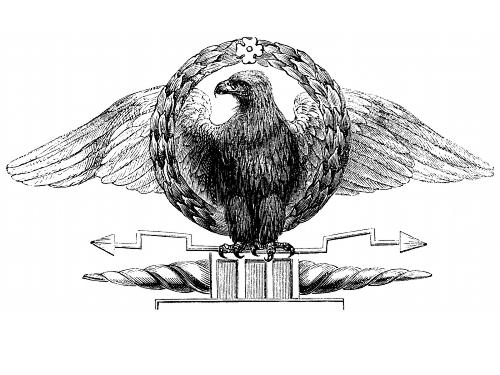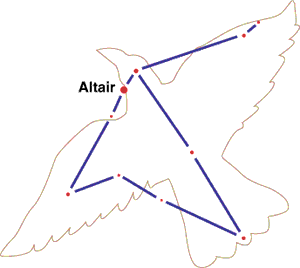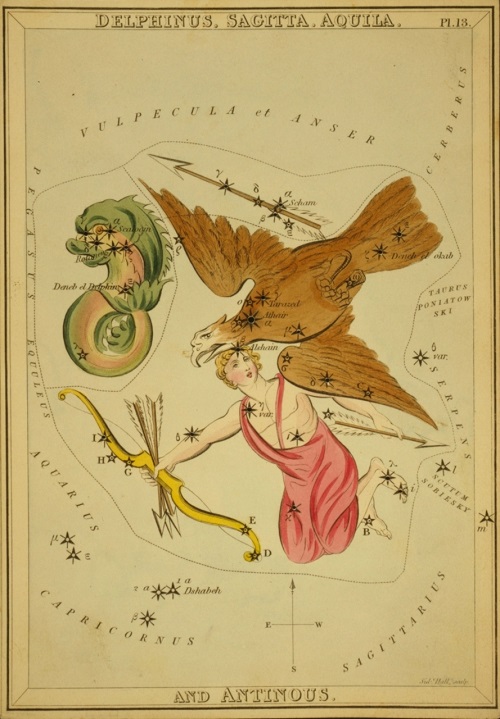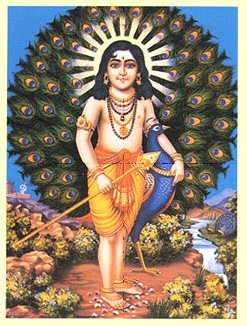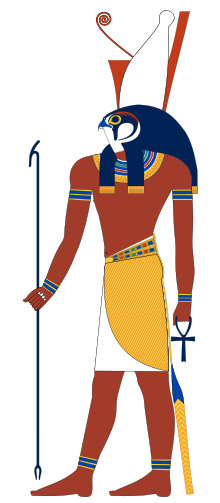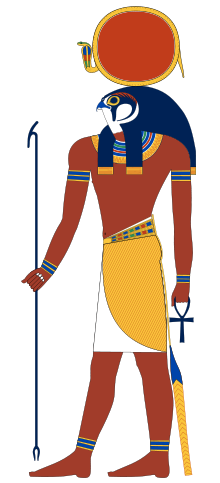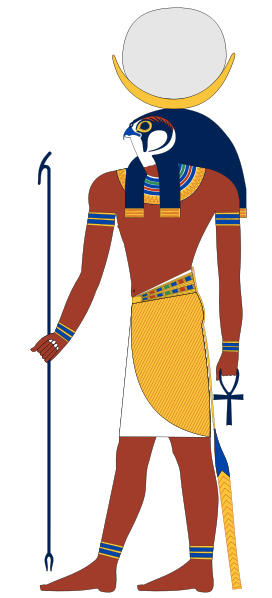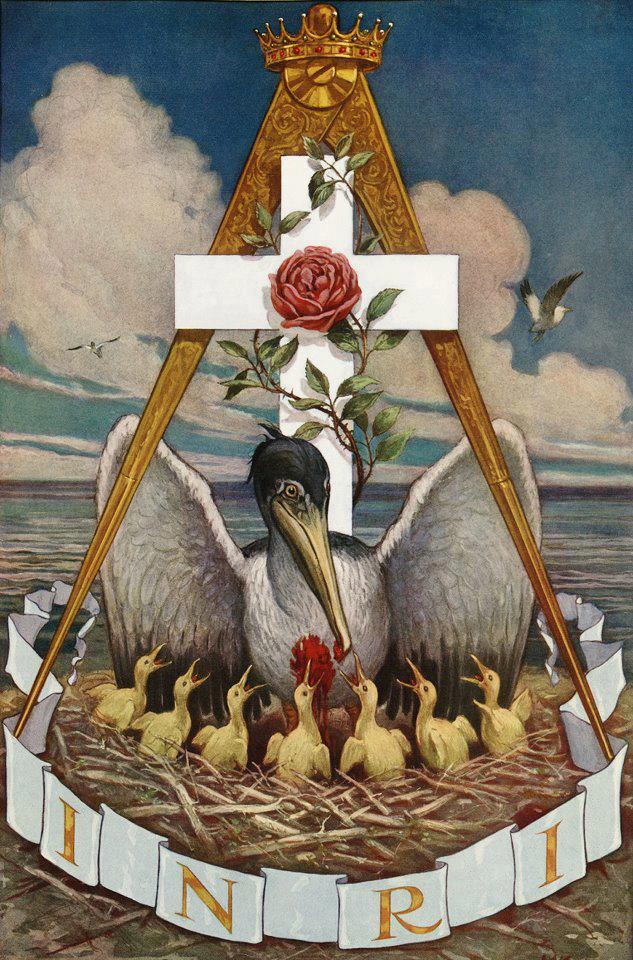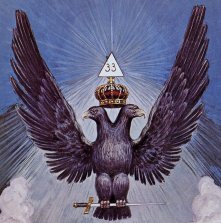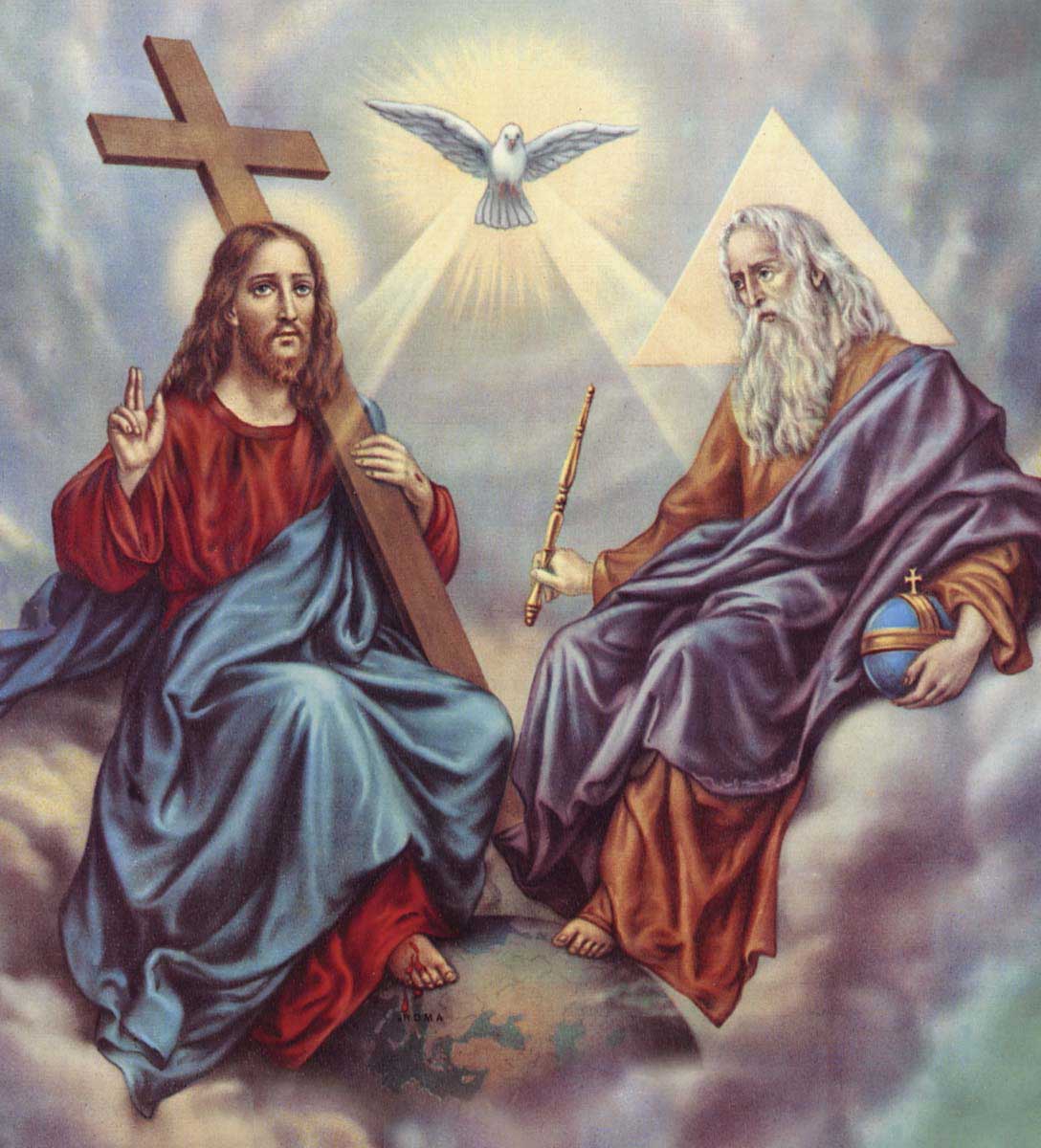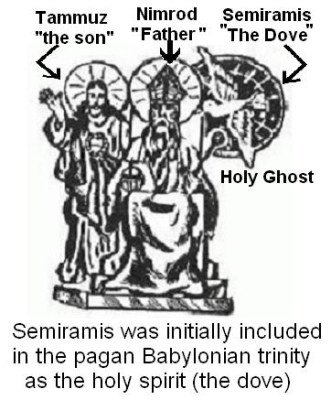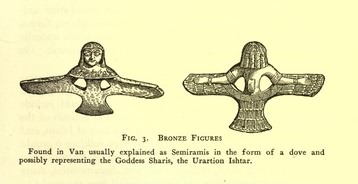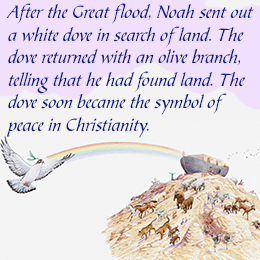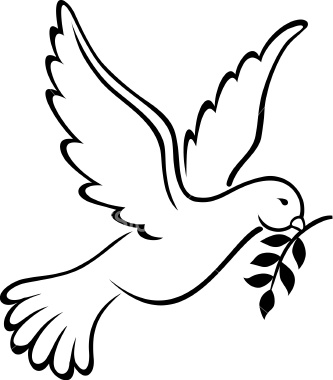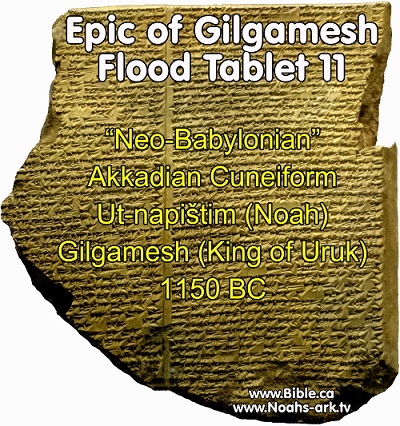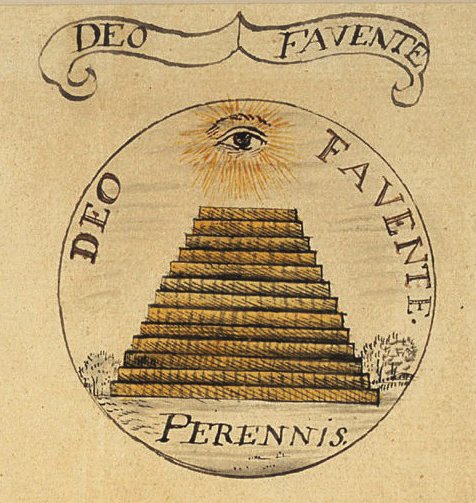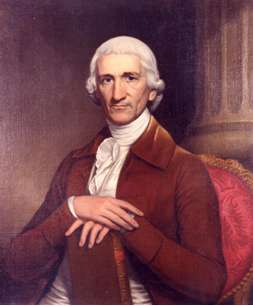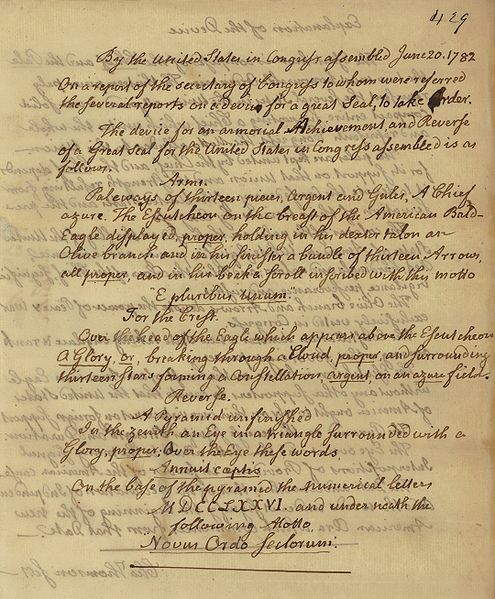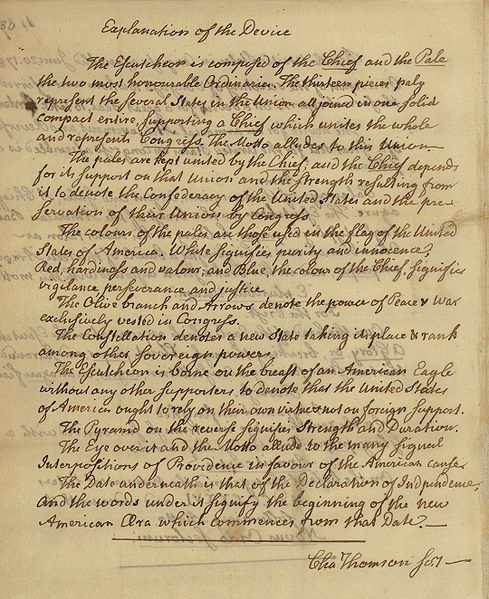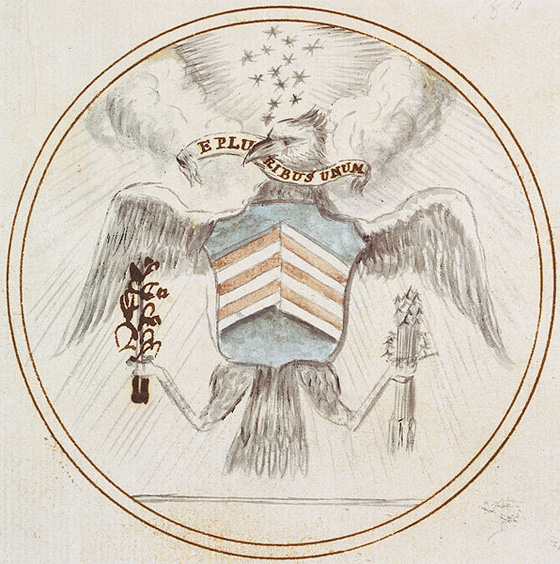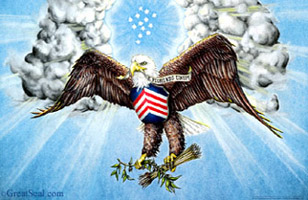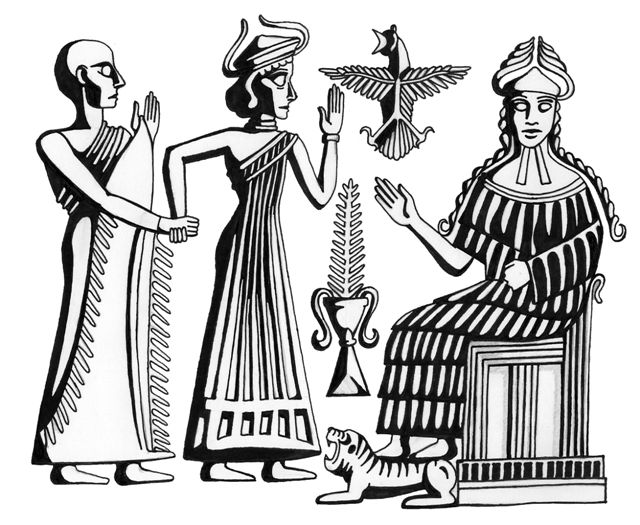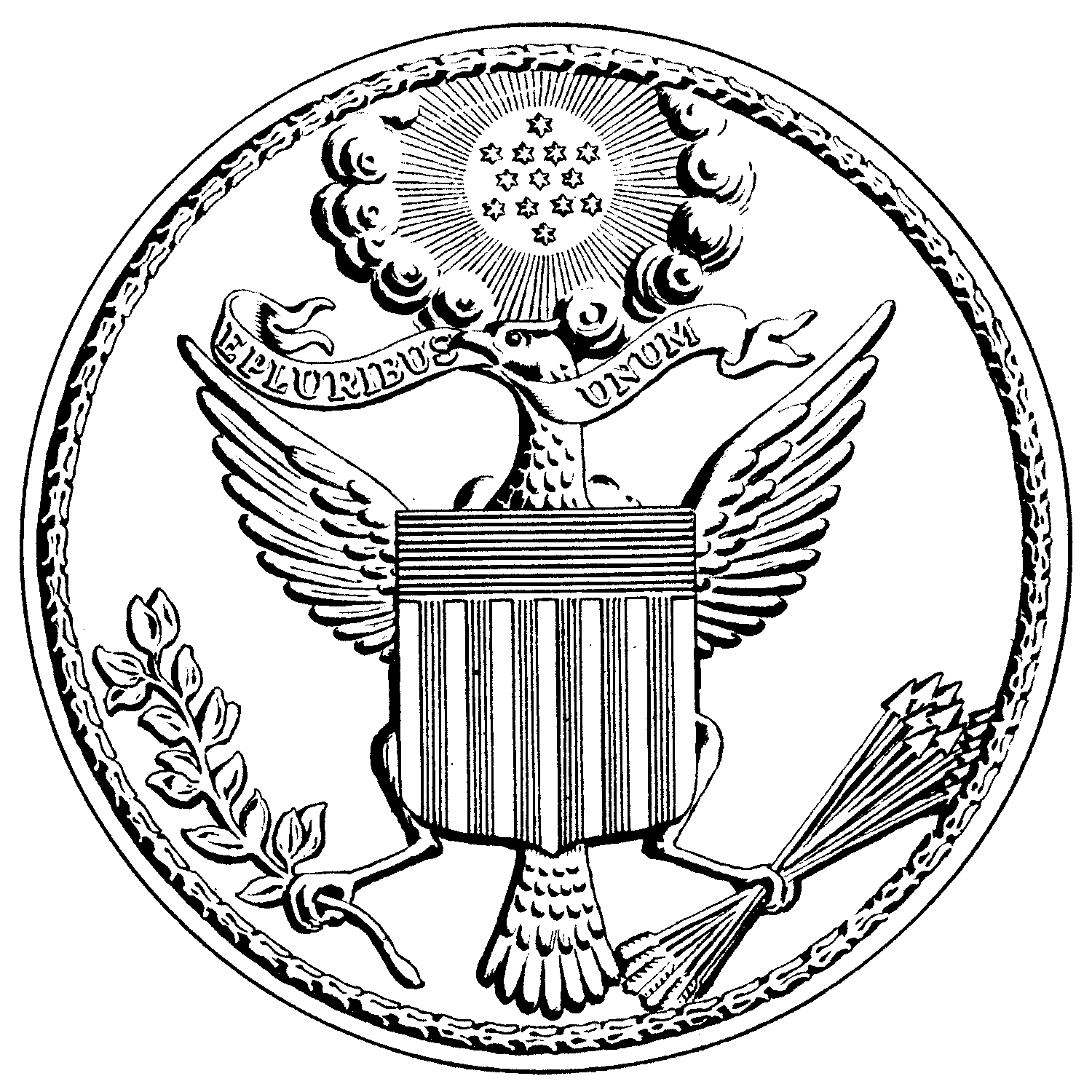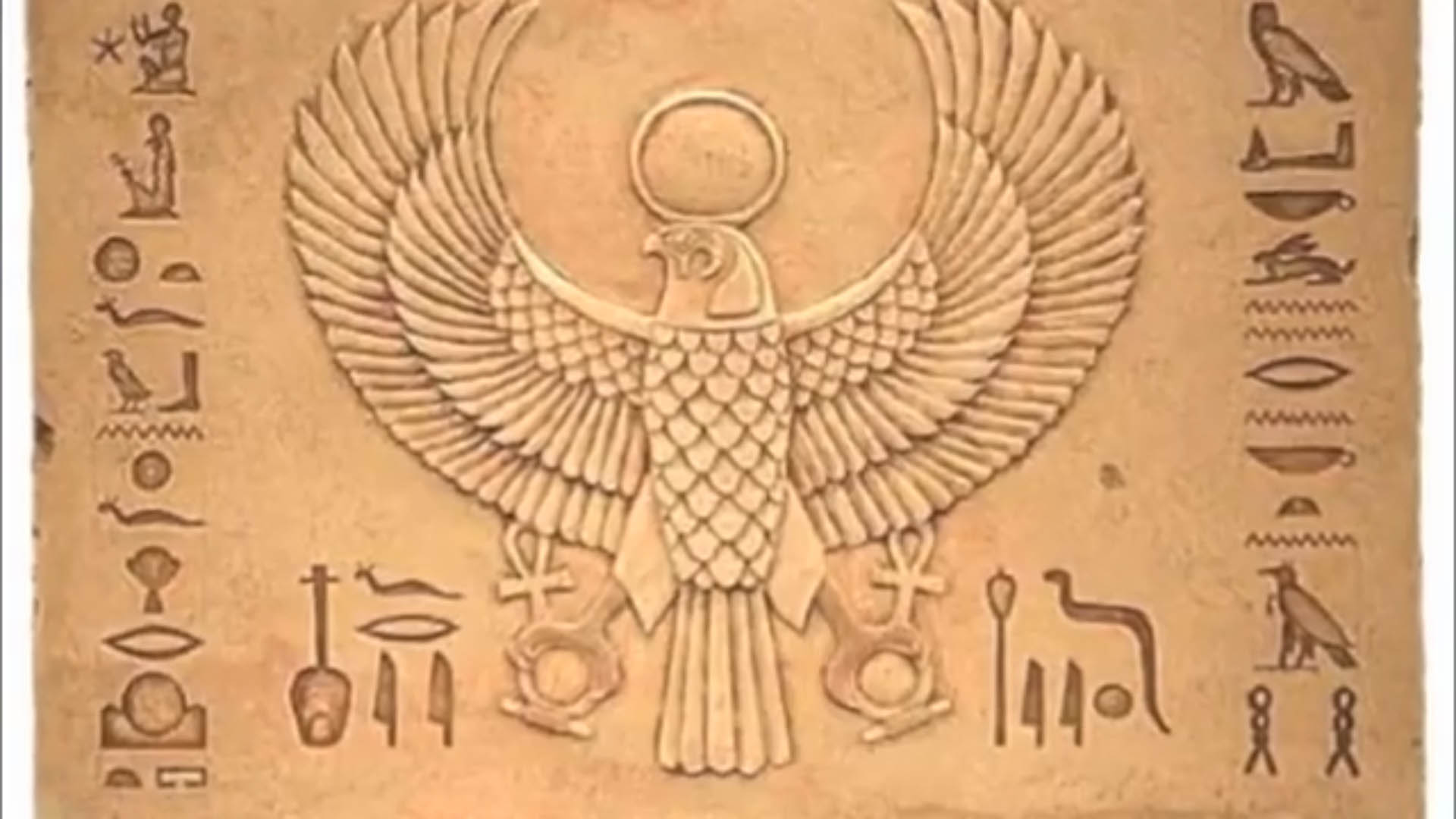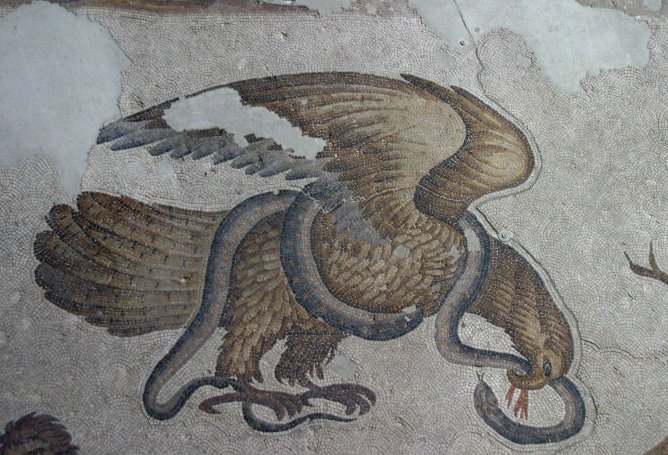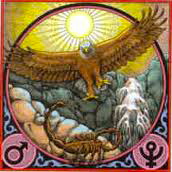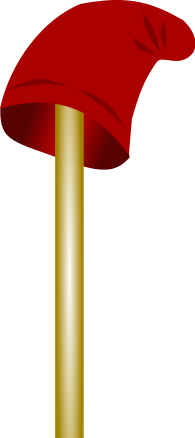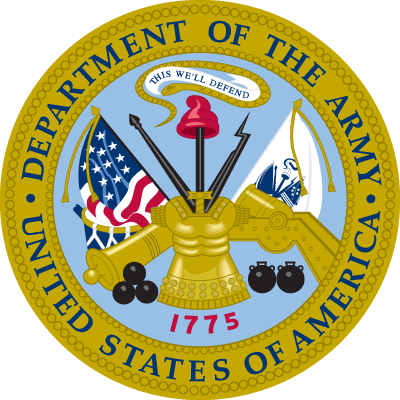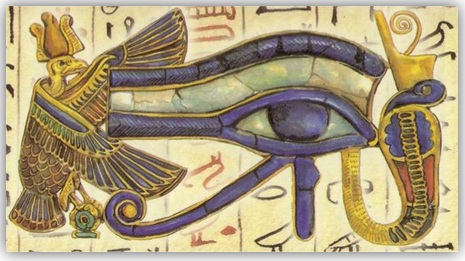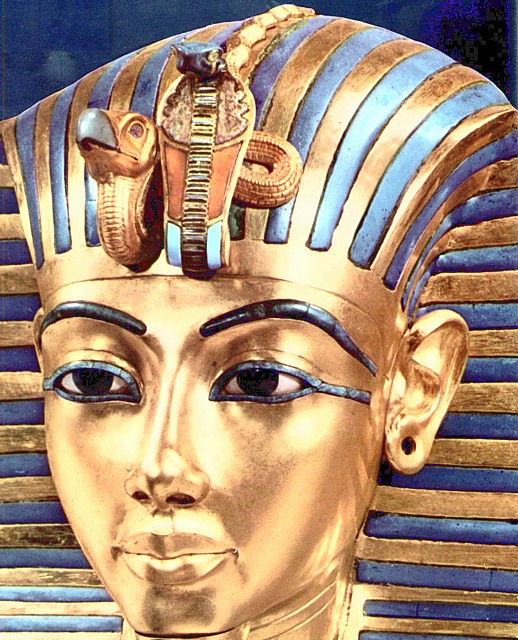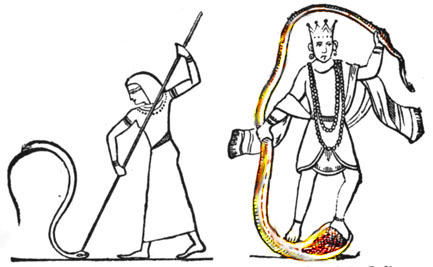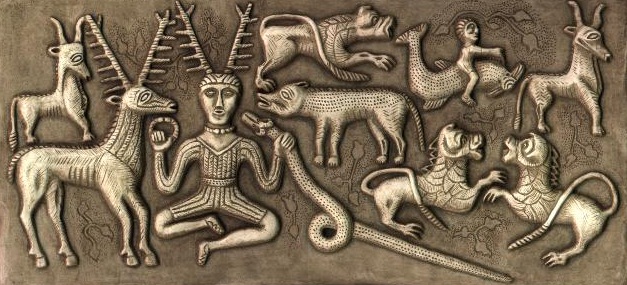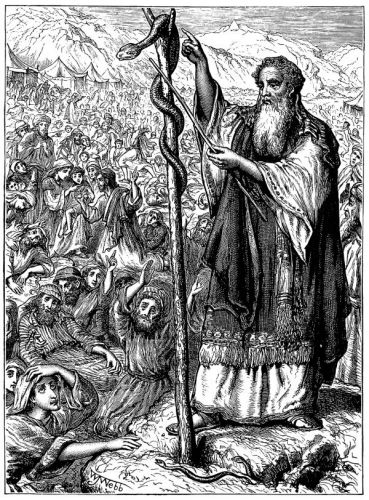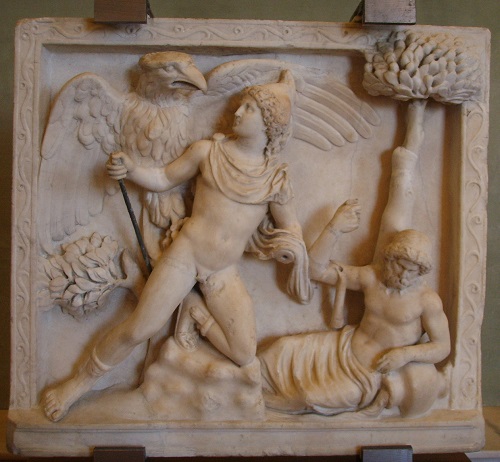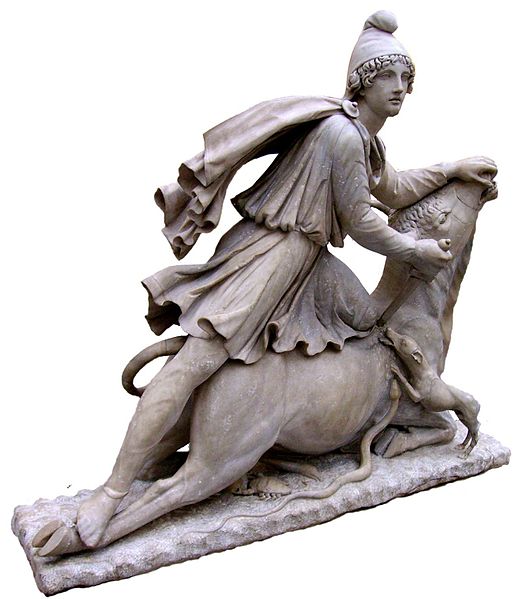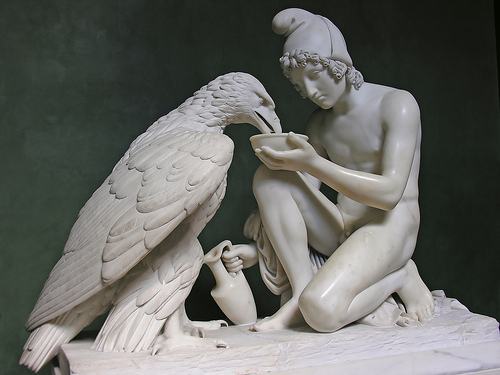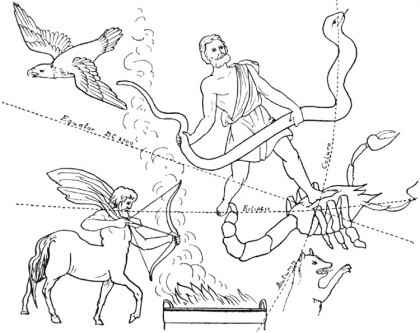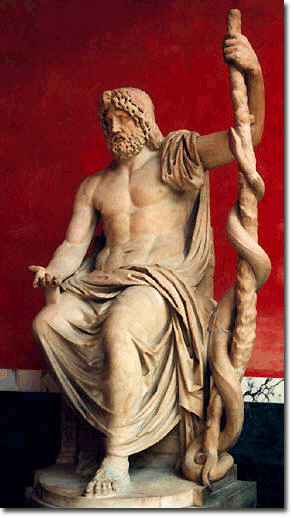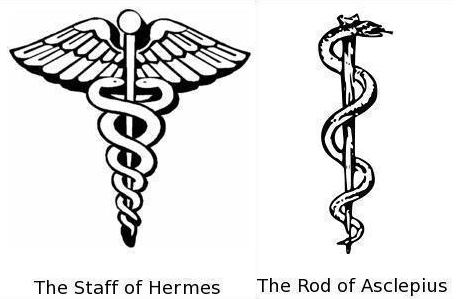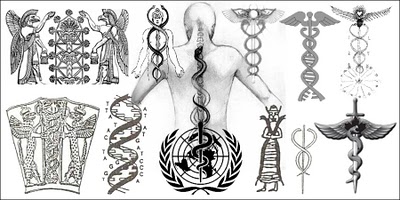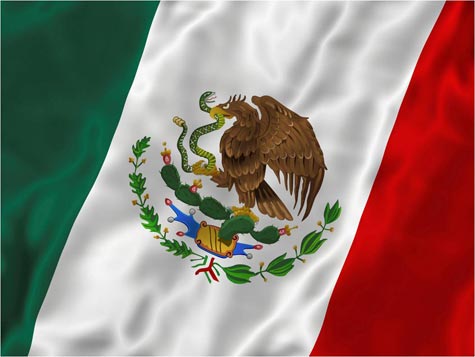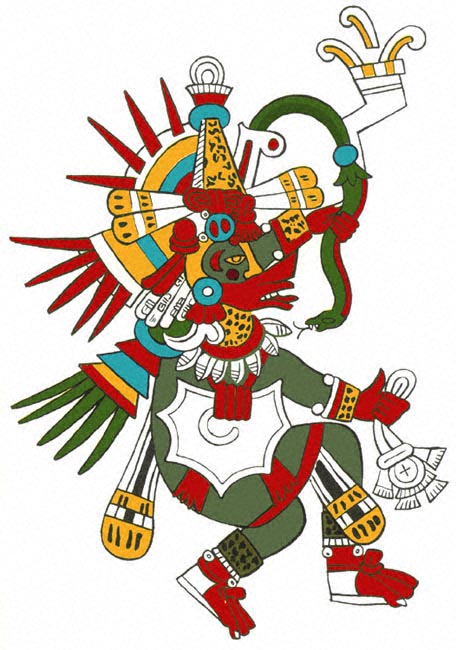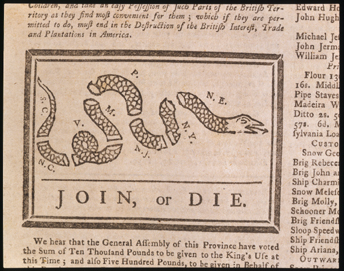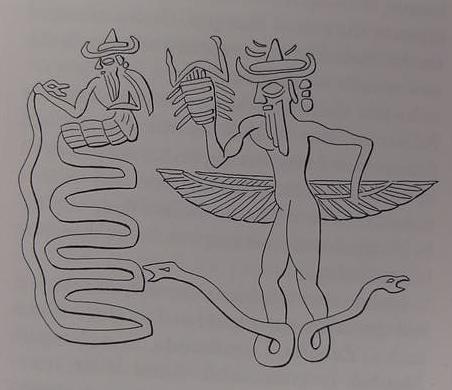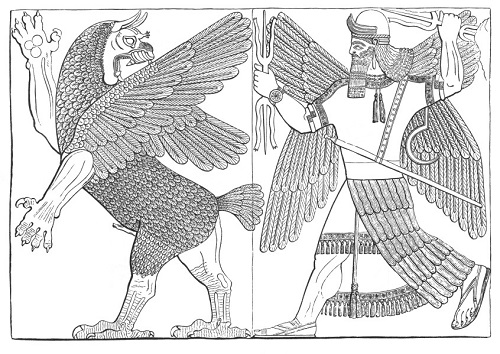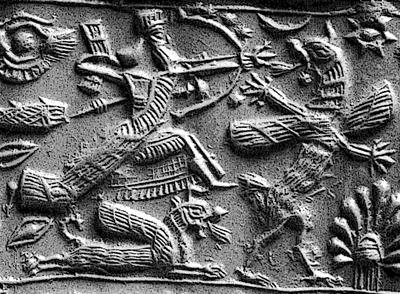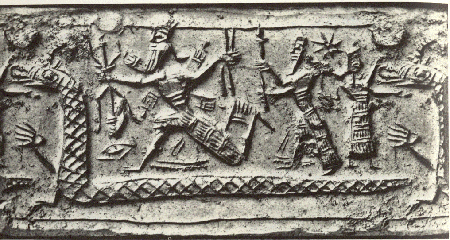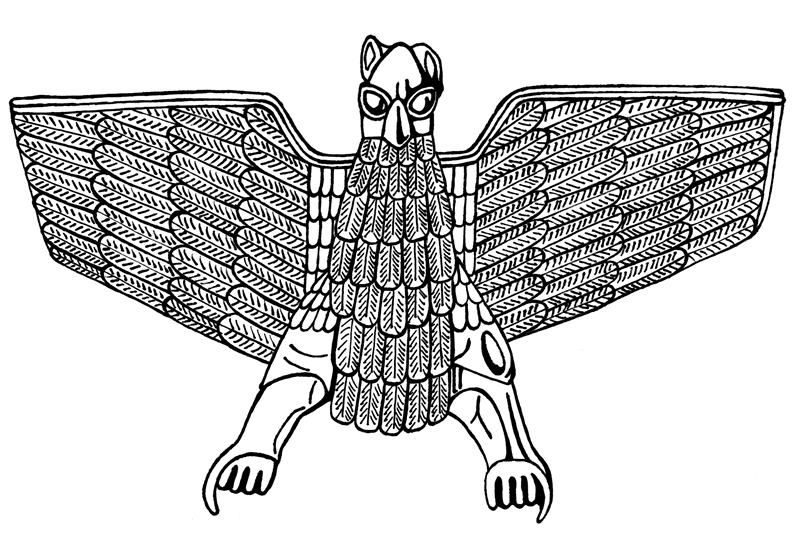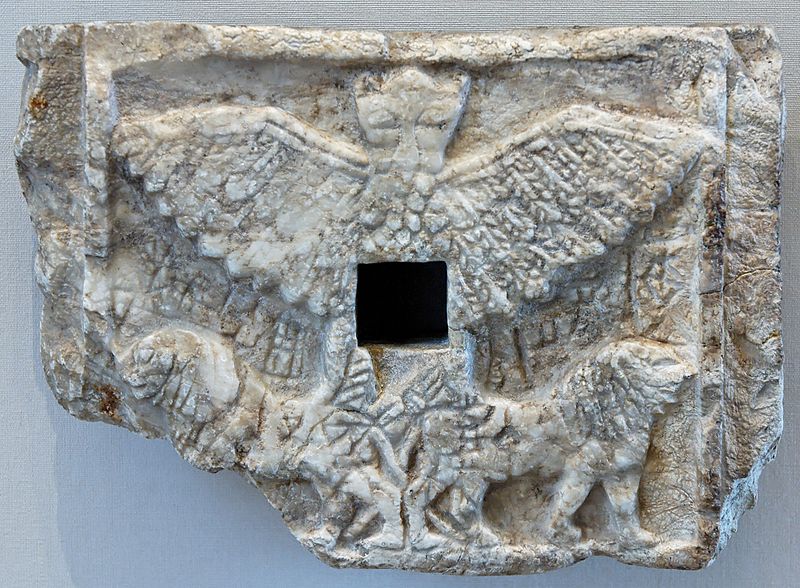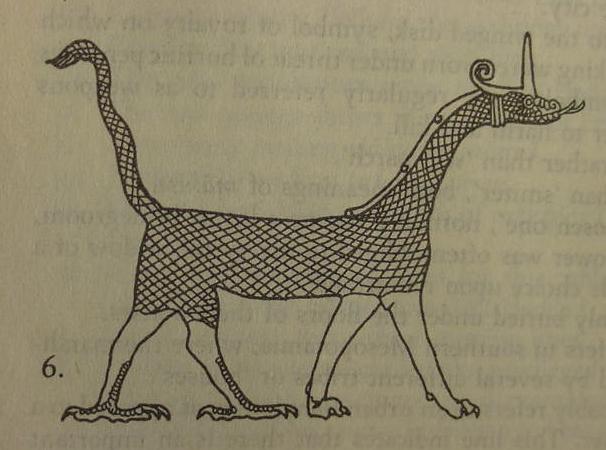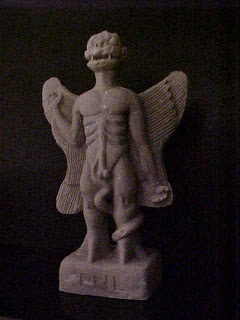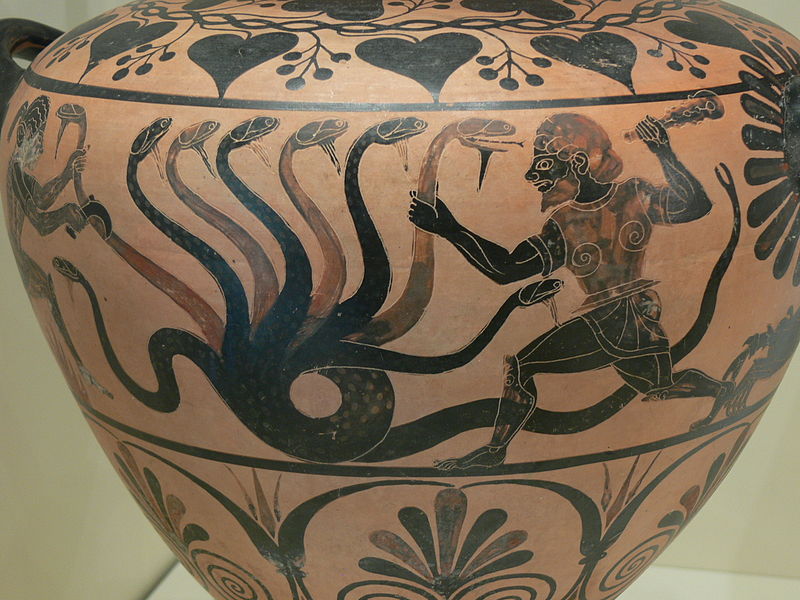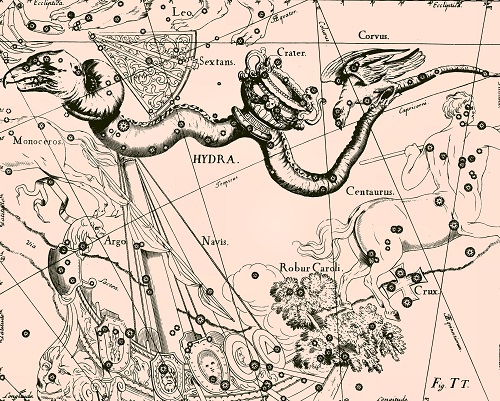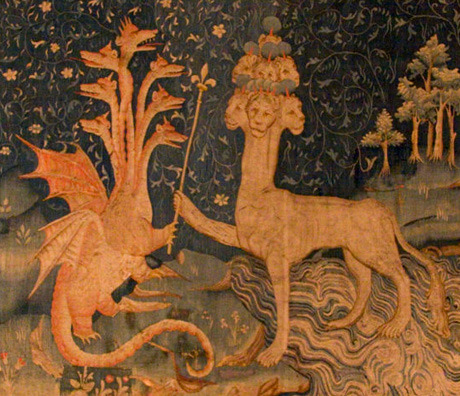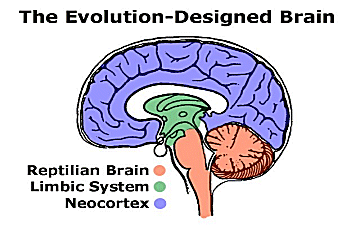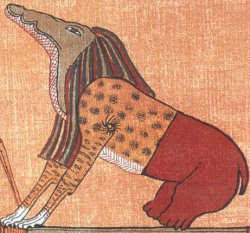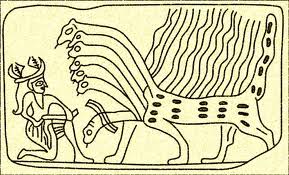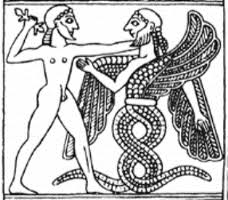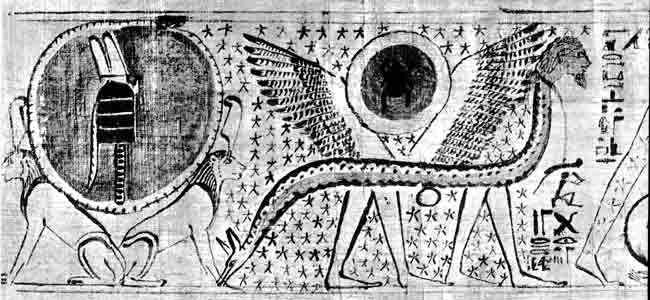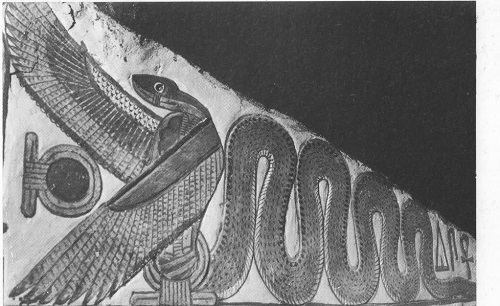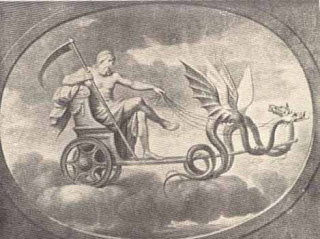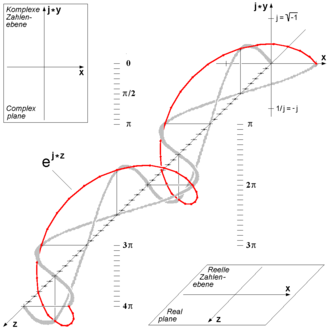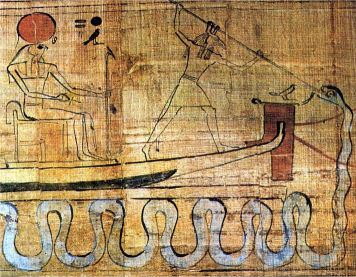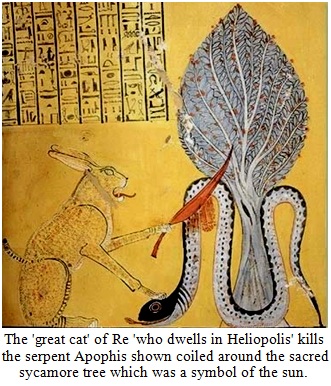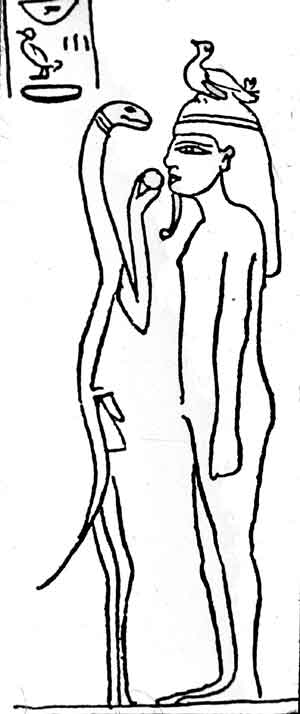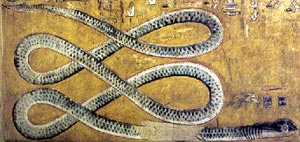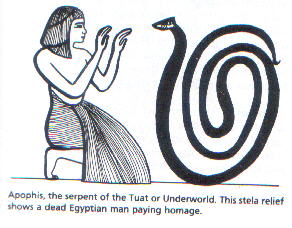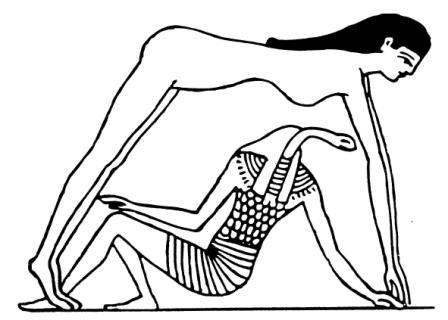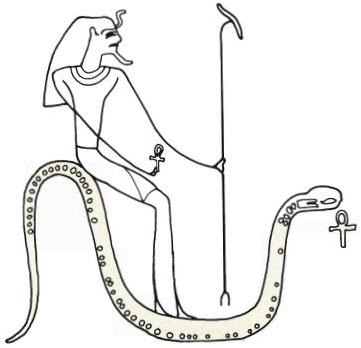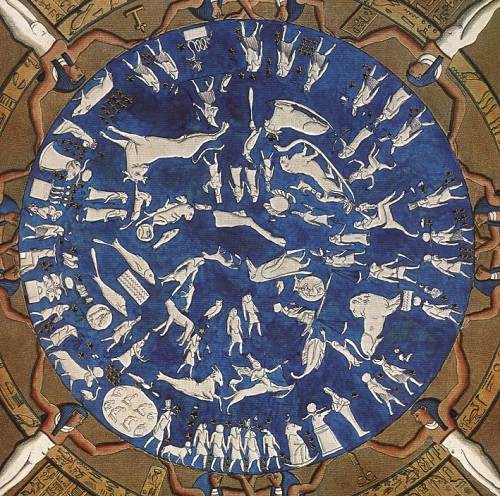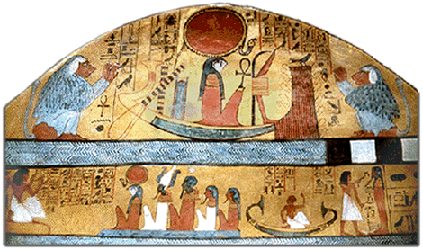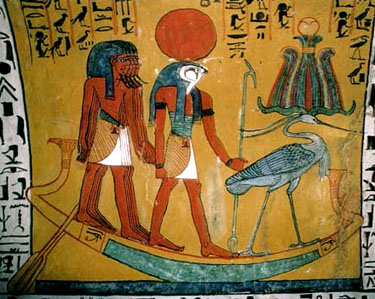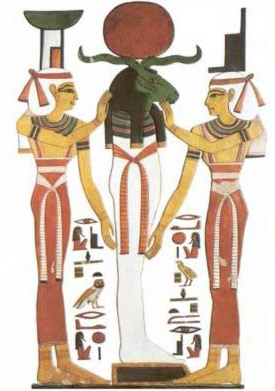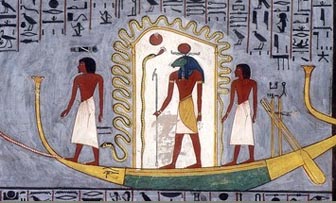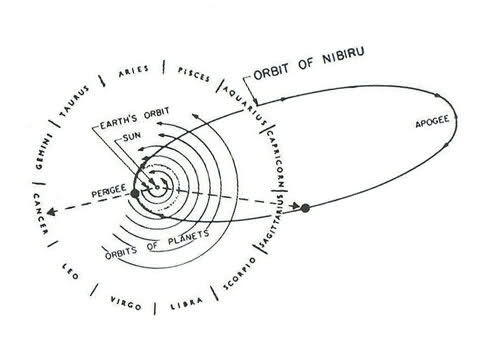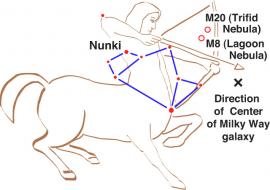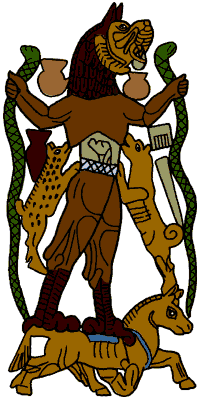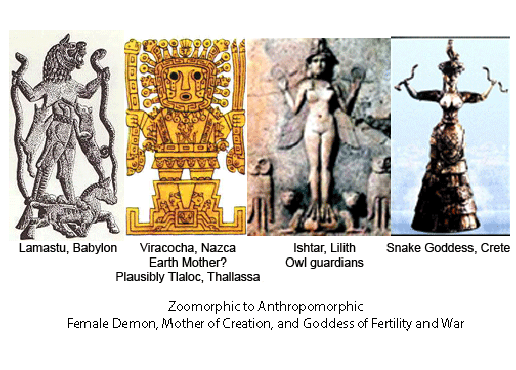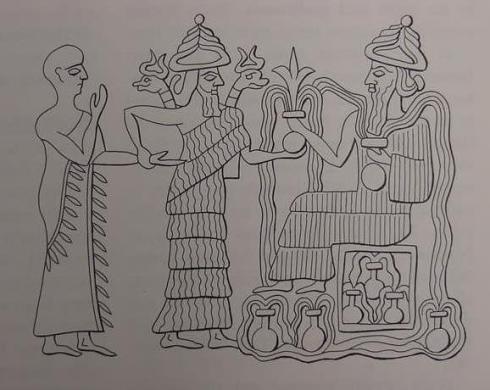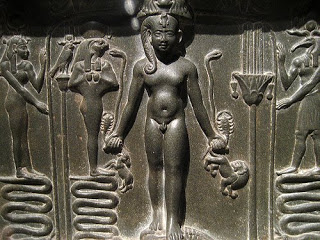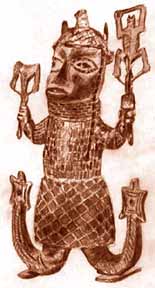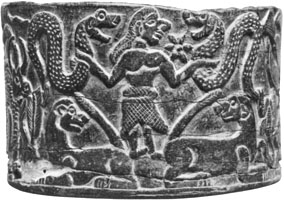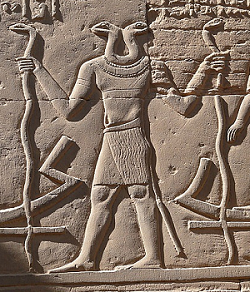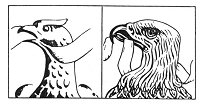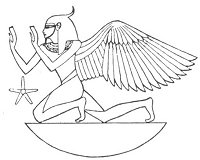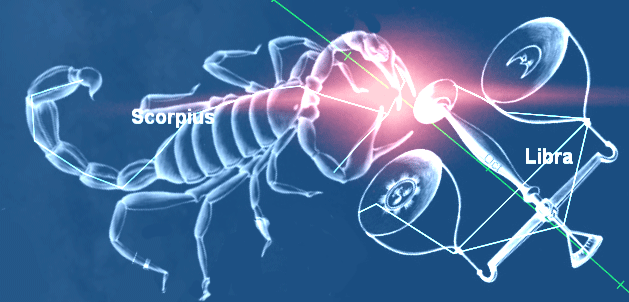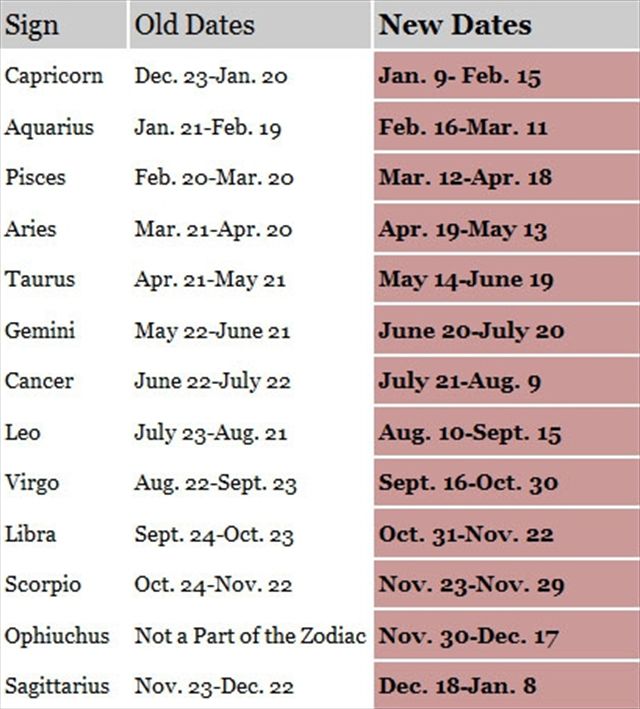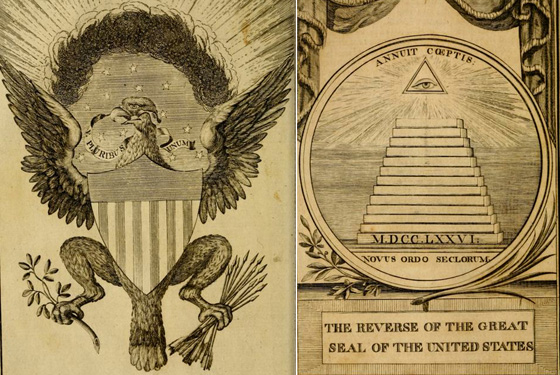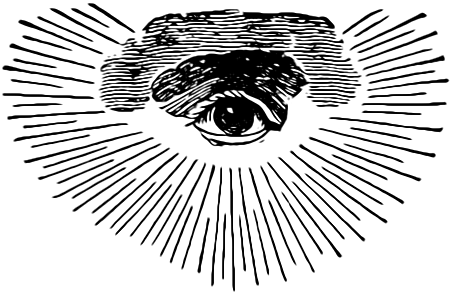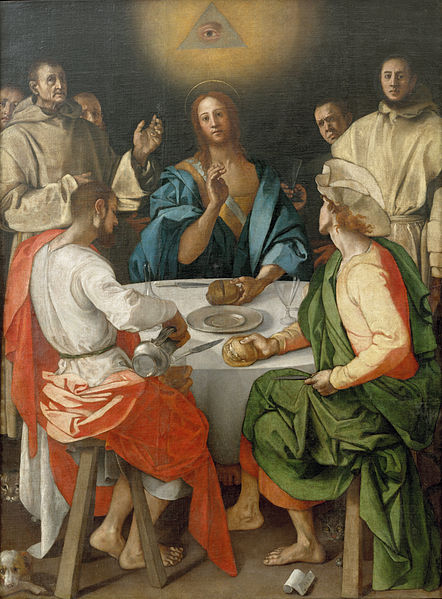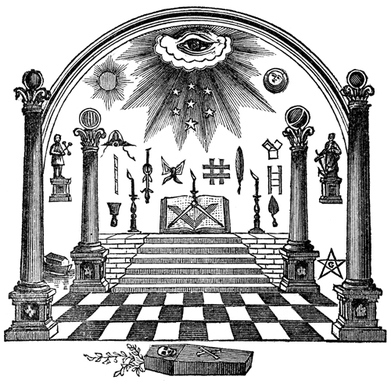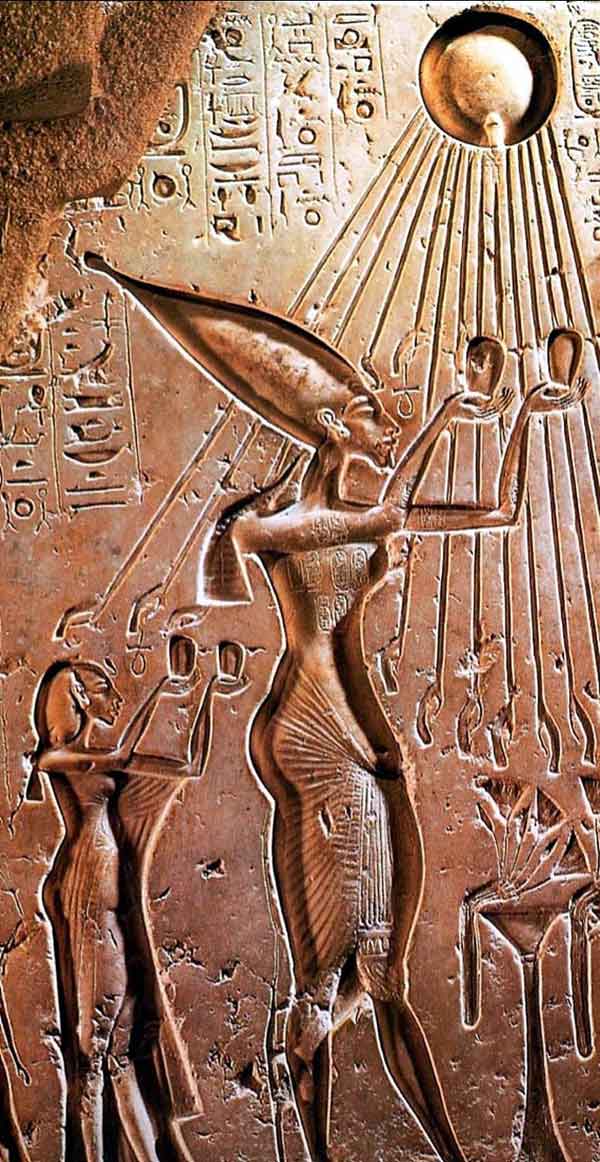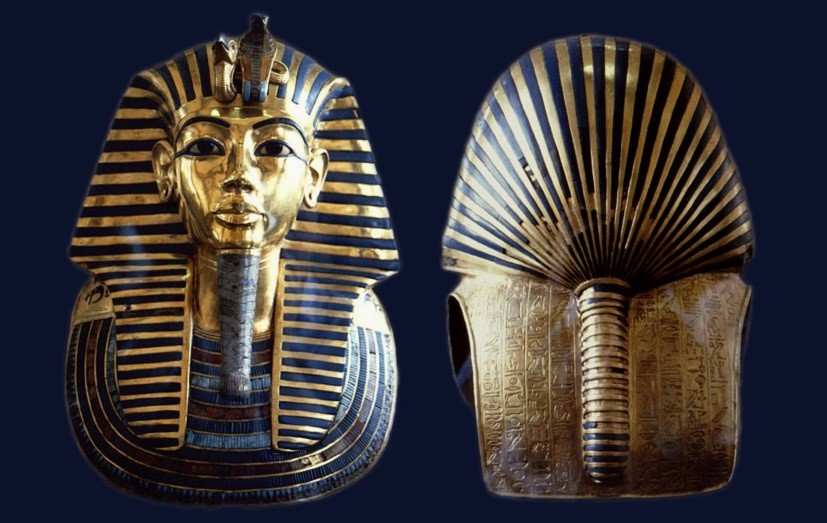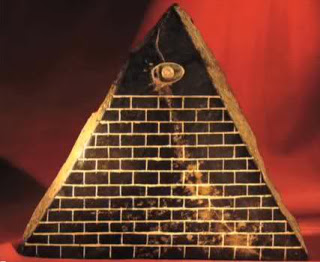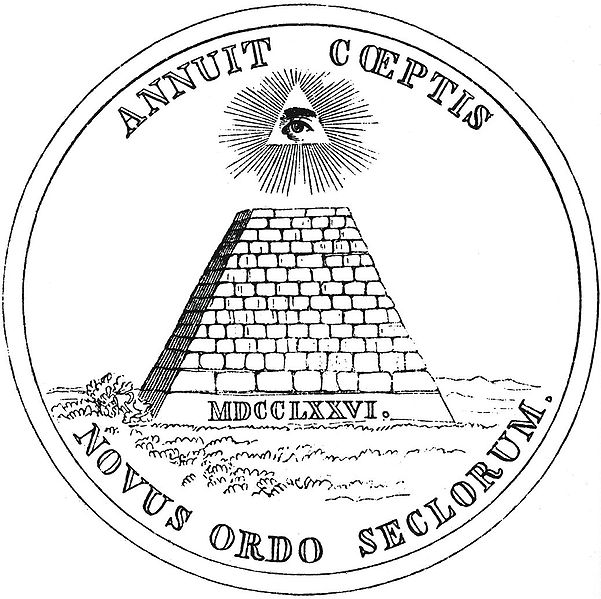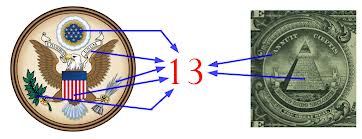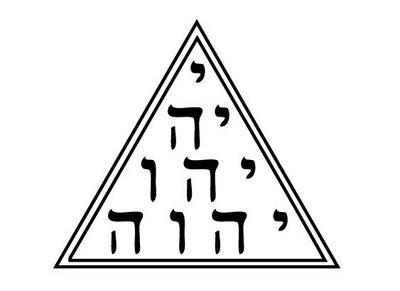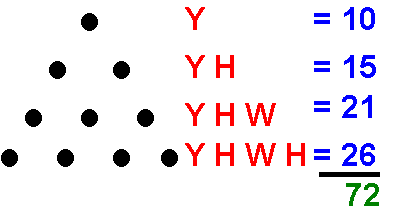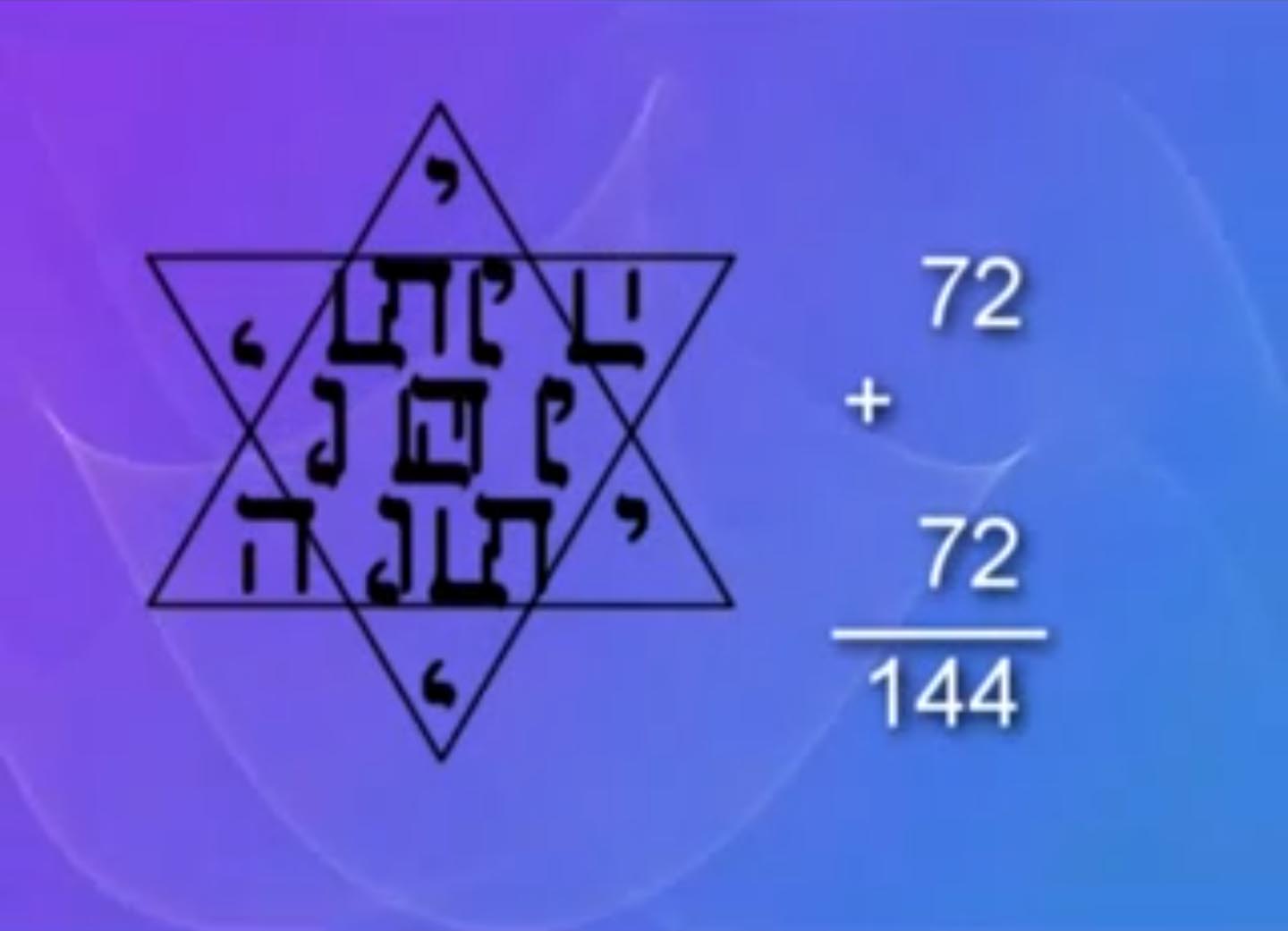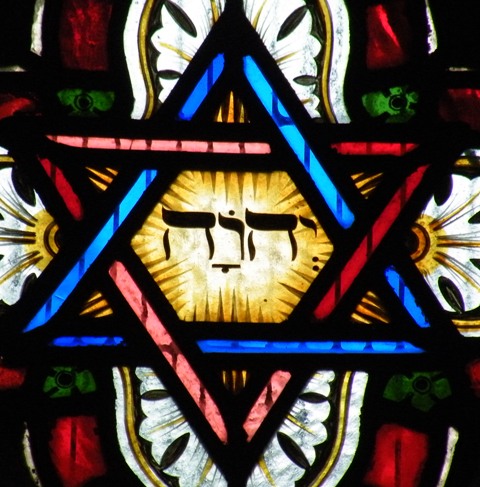US Great Seal Origins?

By the end of this article, you will finally be able to determine for yourself once and for all if America's symbolism was influenced or not by Freemasonry or Ancient "Mystery" teachings...
The first time it was officially mentioned that the "Great Seal" could have been influenced by Freemasonry symbolism was in 1884, when Harvard Professor Eliot Norton wrote that the reverse of the Great Seal of the US was a “dull emblem of a Masonic fraternity.”
But before one could determine that, we would have to take a look at the development of the Great Seal over time, and see where this symbolism came from to help determine its true meaning.
In total there have been four committees that helped to establish the final design of the US Great Seal that we see today.
The first committee responsible for creating the Great Seal was established on July 4th, 1776.
The first committee was composed of:

All of the committee members had already knew each other, as they were also members of the American Philosophical Society.
This was considered to be America's first "learned society," being founded in Philadelphia, Pennsylvania in 1743 (interestingly exactly 33 years before America declared its independence from Great Britain).
Franklin (the only mason) proposed to design a scene of Moses parting the Red Sea, with the Egyptian Pharaoh being overwhelmed by the waters and the phrase “Resistance to Tyrants is Obedience to God.”
Thomas Jefferson happen to fall in love with this quote, and later featured it on his own personal seal design.


Adam’s proposal was of Hercules having to choose between the rugged path of Virtue and the flowery meadow of Sloth.
Here's how Adams described the seal:
"The Hero resting on his Club. Virtue pointing to her rugged Mountain, on one Hand, and persuading him to ascend. Sloth, glancing at her flowery Paths of Pleasure, wantonly reclining on the Ground, displaying the Charms both of her Eloquence and Person, to seduce him into Vice."


Jefferson's proposal was to illustrate the Israelites (similar to Franklin's "Exodus" idea), but being led through the wilderness, on their exodus out of slavery and bondage from Egypt.


For the back side of the seal, Jefferson proposed an illustration of the heroic duo: Hengist and Horsa, 5th-century Saxon warriors from Germany. They came to England as mercenaries to help the Briton tribe defend themselves against the rival tribes of the Picts and Scots. However, King George III also hired German mercenaries to wage war against the colonists, so this choice became problematic.
Of course, all of these designs were rejected in the end.
Du Simitiere however, contributed a great deal to the future of the design, such as the quote “E Pluribus Unum” (note how its comprised of 13 letters), using a shield, the "Eye of Providence" within a radiant triangle, and having opposite characteristics represented (in this case: male vs. female or chaotic rebellion vs. ordered justice/peace), and the year 1776.


The motto "E Pluribus Unum" ("out of many, one") is put into context by Du Simitèire's design, which contains a shield with 6 symbols representing the primary former nations (England, Scotland, Ireland, France, the Netherlands and Germany) from which the colonists now living in America came from (his original pencil sketch even included the 13 abbreviations of the newly formed colonies "coming out from" and surrounding the 6 nations). There were no plans to include a symbol for the 20% of the population that came from Africa however.
The committee submitted their design to the Continental Congress on August 20, 1776, and on the same day they received a report that the proposed design was ordered "to lie on the table," which was a polite way of saying, “Thanks, but no thanks,” to the committee for their work.
It would be over three years later until a new committee would be formed.
Loving this article? Click to Tweet about it here!
The second committee was composed of:

Hopkinson's first design had a shield with thirteen diagonal red and white stripes, supported on one side by a figure bearing an olive branch (representing peace, while referencing the land of Jerusalem where olives would regularly grow, so much so that there's even a region named "Mount of Olives"), and on the other side by an Indian warrior (which later was replaced with a soldier) holding a bow and arrow, and the later holding a shiver.
The crest was a radiant constellation of thirteen stars. The motto was "Bello vel pace paratus", meaning "prepared in war or in peace" (a theme used later with the Eagle holding the olive branch and arrows).
The reverse, in Hopkinson's words, was:
"Liberty is seated in a chair holding an olive branch and her staff is topped by a Liberty cap (originally known as the "Phrygian Cap," being red and representing rebellion). The motto `Virtute perennis' means `Everlasting because of virtue.' The date in Roman numerals is 1776.“
From this committee the following would be incorporated into the final design: the red and white stripes within a blue background for a shield, a radiant constellation of 13 stars, and an olive branch vs. arrows.

Sidenote about the possibly origin of the colors...
It has been claimed by some that the Red and White Stripes being against a Blue background has its symbolic meaning originating from ancient Egypt, as it reflected their 3 crowns.
Combining the Red and White crowns (used for Lower and Upper Egypt's kingdoms respectively) truly symbolized a Pharaoh having the ability to balance his/her lower (red = chaos) and upper (white = order) consciousness, being able to create harmony or "peace of mind" for their followers.
The Blue "Khepresh" crown came into existence later on, and was worn by kings during special ceremonies and in battles, and by the god Amon (the singular "god" Egyptians believed in at one point).
The color blue symbolized water (as well as the sky and the "mushroom of great divine and shaman importance," Psilocybe that turns blue when touched), which itself was a symbol for the wisdom needed to make clear choices.
Thus the American and Great British Flag could possibly represent the delicate balance between order and chaos, which is kept by the informed decisions guided by wisdom.
If you're enjoying this so far, then sign up and receive the beginning of my new online guide, "Illuminati Secret Symbols Revealed" for free!
The third committee was composed of:

This time, the figures on either side of the shield symbolized the "Genius of the American Confederated Republic," represented by a maiden and on the other side an American warrior.
At the top is an eagle (possibly) and on the black pillar within the shield is a "Phoenix in Flames."
The mottos were "In Vindiciam Libertatis" ("In Defense of Liberty") and "Virtus sola invicta" ("Only virtue Unconquered").
What's the significance of a phoenix?


Explaining the phoenix:"This bird was represented resembling an eagle, with feathers partly red and partly golden (reminiscent of the sun or of flames)." - Source: Dictionary of Greek and Roman Biography and Mythology.
Both Herodotus (Greek) and Pliny (Roman) first noted the general resemblance in shape and size between the mythological "Phoenix" (which originally came from Ancient Egypt, then called the "Bennu" bird) and specifically the "eagle." Because of these accounts (along with others) the "Phoenix" took on a new name and life.
The Phoenix/Bennu originated in Ancient Egypt's city of Heliopolis. The meaning of the Phoenix/Bennu was to originally symbolize the understanding of reincarnation for human beings. It also represented the concept of gaining from one's loses, or the alchemical transmutation of the human mind in the metaphorical "Great Work" of turning "coal" into "gold" (i.e. killing the ego, to allow for spiritual maturity/growth).
In the "Mysteries" it was customary to refer to initiates as phoenixes or men who had been "born again." Just like how physical birth gives man/woman consciousness in the physical world, so too the neophyte (after nine degrees in the womb of the Mysteries, similar to the average 9 months of pregnancy) was born into a consciousness of the Spiritual world. This is the mystery of initiation in which Jesus Christ referred to when he said, "Except a man be born again, he cannot see the kingdom of God." (John iii. 3)
Overall, the phoenix was the symbol of spiritual victory, enlightenment, and achievement.
It's important to note that European mysticism was not dead at the time the United States of America was founded. And so it seems apparent that the "hand" of the Mysteries could have very likely had its influence (with symbols and thought) with the establishment of the new government being formed in America.
The original and ancient concept behind the phoenix also most likely inspired the swan of the Greeks, the eagle of the Romans, Napoleon, and Cæsar, the Zodiacal eagle associated with the constellation of "Ophiuchus" (in Greek meaning: Serpent Holder/Bearer/Wrestler) and the constellation of "Aquila" (Latin: eagle; sometimes named the Vulture), the peacock of the Far East, the falcon of ancient Egypt's deities such as Horus, Ra, etc., the pelican of the Rose Croix degree (Rosicrucian) (depicted feeding its young from its own breast), Freemasonry's single and double-headed eagles, and Christianity's / Babylon's dove meant to represent the "holy spirit" / mother goddess archetype, "Semiramis," which represented the human soul being born (thus "creation" = an aspect of the "divine"), similar to a yonic emblem or the third "person" of a creative triad (in geometric terms, the yonic shape is the third "shape" created from two circles opposite each other coming together).


Sidenote about the dove...
The best-known example of a dove in the Bible comes from the flood story of Genesis 6—9.
In Genesis 8:8—12, after the ark has landed on the mountains of Ararat, Noah sends out a dove three times to see how far the flood waters have receded.
The first time it found nothing and returned to the ark.
The second time it brought back an olive leaf, so Noah could see that God’s punishment was over and life had begun again on the earth. (The image of a dove holding an olive branch continues to be a symbol of peace to this day.)
The third time, the dove did not return, and Noah knew that it was safe to leave the ark.
A similar flood story is told in parallel passages in the ancient Babylonian Epic of Gilgamesh. There, too, the hero (Utnapishtim) sends out a dove, which returns to the ship unable to find a perch.
In fact, from Ancient Near Eastern records to nautical practices as recent as the 19th century, sailors the world over used doves and other birds to help them find and navigate toward land. So, while Noah made use of an ancient sailor’s trick, the dove came to represent a sign from "God."
Due to its white color and gentleness / devotion to its young, the dove was also looked upon as the embodiment of the maternal instinct. Since every living creature was brought into existence through a generative process, the dove has been associated with those deities identified with the procreative functions, such as: Semiramis, Asherah, Astarte, Tanit, Cybele, Isis, Venus, Juno, Mylitta, and Aphrodite, etc.
The dove is also an emblem of wisdom, for it represents the balance of power and order (liberty pole and justice scale or arrows and olive branch) by which "peace" is maintained. It has long been accepted as a messenger of the "divine will," and signifies the activity of "God's watchful eye" over us or the greater good for all.

On the reverse of William Barton's design, there was a pyramid consisting of thirteen steps, with the radiant Eye of Providence overhead, and used the mottos "Deo Favente" ("With God's Favor," or more literally, "God Favoring") and "Perennis" ("Everlasting").
The pyramid's design came from the $50 Continental currency note (pictured right) created in 1778 by Hopkinson (the previous "artist" from the second committee), which had a nearly identical pyramid and even the motto "Perennis."
Barton had at first specified "on the Summit of it a Palm Tree, proper" with the explanation that "The Palm Tree, when burnt down to the very Root, naturally rises fairer than ever" (again "pheonix" symbology), but later crossed it out and replaced it with the Eye of Providence, taken from the first committee's design.
Again, Congress rejected the submitted design.
From this committee however, the following would be incorporated into the final design: eagle (although possibly a phoenix) and a pyramid of 13 steps.
The fourth committee was composed of:

Charles Thomson
Congress eventually delegated the responsibility to Charles Thomson (Secretary of the Continental Congress for its entire 15 year existence) to create a design after giving him the work from the previous three committees.
Thomson's final design was submitted and approved by Congress the same day on June 20, 1782 (six years after the first committee was established). He used a combination of the elements provided by all three of the committees.
Note: Interestingly, Thomson did not include his sketch or any other artwork in his final report to Congress that got approved. Instead, the original Great Seal consisted only of:
This is still the official active law today.
He added the Latin words, “Annuit Coeptis” ("Providence - meaning "God" or the collective of all humankind - has Favored Our Undertakings") and “Novus Ordo Seclorum.” (Charles Thomson had previously received classical training and worked as a Latin tutor at the Academy of Philadelphia.)
While many people believe "Novus Ordo Seclorum" translates into "New World Order" or "New Secular (without religion) / Wordly (materialistic) Order," in reality it translates to "New Order of the Ages / Generation / Century." Almost as a homage to what the phoenix inspires once again.
And this may rightfully be so, since with assistance, America had defeated one of the mightiest empires the world had seen in a long time, Great Britain. The new country of America at this point had limitless potential and was establishing a "government of the people, by the people, for the people."
Now let's take a look at the original sketch proposal Charles Thomson gave us, and see how its transformed over the years...


- Main Points -
Remarks and Explanation
by Charles Thomson (June 20, 1782)
"The shield (escutcheon) is composed of thirteen stripes that represent the several states joined into one solid compact, supporting the chief (top section of the shield) which unites the whole and represents Congress. The stripes are kept closely united by the chief and the chief depends upon that union and the strength resulting from it.
The motto E Pluribus Unum alludes to this union.
The shield is born on the breast of an American Eagle without any other supporters to denote that the United States of America ought to rely on their own virtue.
The olive branch and arrows denote the power of peace and war which is exclusively vested in Congress.
The constellation of thirteen stars denotes a new state taking its place and rank among other sovereign powers.
The pyramid signifies strength and duration.
The Eye over it and the motto Annuit Coeptis allude to the many signal interpositions of providence in favor of the American cause.
The date 1776 underneath is that of the Declaration of Independence and the words Novus Ordo Seclorum under it signify the beginning of the new American Era, which commences from that date."

Also, it's often overlooked, but in the eagle's beak he placed a scroll with the first committee's motto: "E Plurbus Unum"... now notice how this eerily resembles the concept of the constellation of "Ophiuchus" (Serpent Holder).
Ophiuchus is commonly represented grasping a serpent, which is represented by the constellation of Serpens that intersects Ophiuchus.
Ophiuchus was sometimes associated with an eagle (known as a great foe to serpents) and Scorpio (the constellation directly below Ophiuchus) was sometimes associated with a snake in ancient Egyptian/Babylonian astrology.
In the eagle form, it would have to hold the "serpent" within its mouth to keep it from biting its own tail - known as the "Ouroboros" (symbolizing an endless cycle... thus this act broke the relentless cycle for something new to take place, as well as symbolizing our higher consciousness - eagle - overcoming aspects associated with our lower consciousness - serpent).



In Ophiuchus's human form, the left foot would be placed on top of the scorpion (since the constellations intersected), again symbolizing control over it.
Interesting to note, is that directly to the west is Sagittarius (the archer which carries arrows) and Aclius (eagle constellation), which was known to fetch Zeus's/Jupiter's thunderbolt arrows after he threw them in Greco-Roman mythology. Seems almost fitting that America's eagle now is holding arrows as well, although its likely a coincidence being how common arrows are to represent war/power/chaos.
Also, in Greco-Roman mythology Ophiuchus was depicted as Asclepius/Vediovis ("god" of medicine and healing).
(funny side note, in Greece mythology one of his daughters was named Hygieia or Hyginie -- hygiene.)
Associated with him was the Rod of Asclepius, a snake-entwined staff (symbolizing the flow of opposite energies traveling up the base of our spine towards our brain) originating from Sumeria's Enki, known for medicine among other things, which remains a symbol of medicine today.
The serpent motif (DNA, etc.) typically has wings added on top of the staff, giving you the eagle, which is akin to a winged serpent.
(note: there is scientific evidence that shows birds evolved from reptiles... symbolically this shows that the two, although at first glance appear as opposites, are really the same... a concept ancient civilizations heavily believed in).
The twin serpents or serpent (associated with the ground) vs. the wings (associated with the air) symbolized a duality, which reflects the two natures found in man.
Where else did this symbolism carry over to?
Mexico's Flag
Notice how the cactus is purposely drawn stretched out, resembling a scorpion's body and tail. Also, the thorny cactus could be a nice plant-metaphor for a stinging scorpion.
The vision of the Eagle and Serpent was the fulfillment of an ancient prophecy, in which the wandering tribes would find the destined site for a great city whose location would be signaled by an eagle eating a snake while perched atop a cactus (strongly reflective of the concept of Ophiuchus).
The Aztecs saw this vision on what was then a small swampy island in the middle of Lake Texcoco, after which they founded their capital Tenochtitlan (today known as Mexico City), on March 13, 1325.
The plumed or feathered Serpent "God" (Quetzalcoatl) of the Aztecs and Mayans (located in present-day Mexico).
But is there any more reason to believe that within the United State's own culture the serpent could have been in fact a metaphor for the scroll with the Latin words "E Plurbus Unum" (Out of Many, One) written on it?

Sidenote about the serpent...
In the book titled, "Astronomy of the Bible," it's believed that "Ophiuchus" has been taken as symbolic in later literature, and "placed in relation to the words spoken by God to the serpent in the Garden of Eden."
"And I will put enmity
between you and the woman,
and between your offspring (seed) and hers;
he will crush (strike) your head,
and you will strike his heel.”
(Genesis 3:15)
In this instance, the serpent may be seen as Scorpio ready to sting/strike the heel of the foot that Ophiuchus/man is stepping on it with.
Prototypes of the snake in the "Garden of Eden" likely came from Babylon / Sumeria:

|
Nirah (part human / serpent) |
Tiamat (sea dragon or serpent) |
Anzu (To Know Heaven) sometimes depicted as a "lion-headed eagle" |
Mushussu (Red / Fierce Serpent) |
Pazuzu (Demon of Chaos with lion/dog head, eagle-like taloned feet, a scorpion's tail, and a serpentine penis.) |
Hydra (Greek mythology and constellation) |
Beast of Revelation |

In general, throughout history reptilians have been a personification of our lower consciousness, while also symbolically being cold-blooded creatures.
Science today even refers to the original part of our brains as our "reptilian brain."
In contrast, mammals (such as humans and birds), were associated with our higher consciousness and symbolically warm-blooded.
Seeing both aspects of animals combined together in the above and below examples represented the fragile reality of our consciousness... how it's necessary to maintain a balance between a duality to achieve a mental state of "peace"... i.e. between chaos and order, yin and yang, etc.

Chronos (similar to the titan Cronus/Saturn (Satan)), being carried by serpents... personified "time" (which is the Greek translation of "Chronos" or "Father Time") as being the "reaper" of man.
Also, the way a serpent moves/slithers on the ground is reminiscent of the movement of a Sine wave, denoting the passage of time...
This is best expressed in Euler's formula (1707 - 1783), where the famous physicist Richard Feynman called this equation "our jewel" and "one of the most remarkable, almost astounding, formulas in all of mathematics."


In modern electronic engineering and other fields, signals that vary periodically over time are often described as a combination of sine and cosine functions.
And interestingly, this complex exponential function is sometimes denoted as: cis(x) or ("cosine plus i sine").
As some have speculated as a possible allusion to the Bible, if asked, "Why do people go to Hell / Die?"... because I sin... "cos i sine."
Making "Sin" / "time" again the killer of man, and the fact we're all physically born with time ("sin") working against/aging us.
While this equation truly expresses a 3-Dimensional form, in a side view (2-Dimensional form) it would look like a more simple wave function... or as the Egyptians have depicted as "Apophis" ("deity" of darkness, chaos, and destroyer of the world).


Significance of the boat of Ra...
The oldest circular zodiac known is the one found at Tentyra, in Egypt, called the "Denderah." Each "deity" also represented a constellation or "heavenly body" in the skies.
Ra's boat depicted him moving across the Nile River... which was an allegory for his constellation moving across the Milky Way Galaxy.

But which constellation did he originally represent?
Take a look at what's wrapped around the sun sitting on top of Ra's head in the image on the left... that's right, a serpent.
Ra symbolized the original constellation of "Ophiuchus" or the "Serpent holder."
And the bird seen depicted differently in the two above images as "guiding" his boat, was no other then the Bennu (Phoenix).
Notice how in the image on the left, the bird is perched on a mound. In Egyptian mythology, it was said to have flown over the waters of Nun (meaning "primordial waters" of chaos from which order was created) that existed before creation, landing on a rock and issuing a call (word, sound, vibration) that determined the nature of creation. Thus it was a symbol of rebirth and was therefore associated with Osiris.
Also, the Bennu would land and rest on the highest mound after the Nile would flood, resembling the sun floating over the waters. Already, we can see the parallels between this and Christianity's / Babylon's dove after the Great Flood.
Therefore this bird, sometimes called "the ascending one," was associated with the sun god Ra, whose ba (soul) it was thought to be, as well as Atum (the self-created "god," which also created this world). The Bennu was especially respected in the Egyptian town of Heliopolis ("city of the Sun"). This was all a metaphor, as the sun symbolically allows us to see this world... thus "creating" it every morning.
The Bennu bird, at the helm of the Boat of Ra, would "guide" him down the ecliptic path of the Nile (Milk Way Galaxy), between the constellation of Ophiuchs/Ra (representing the northern sky, and the individual rebirth of souls) and Orion/Asar (representing the southern sky, and the collective eternal life), which were twins who shared one soul between them, the Bennu bird.
From the word and concept of the Bennu, we get the benben stone, which is the prototype of later obelisks and capstones of the great pyramids. These were also symbols of Ra.
On the ground, the pyramids of the cites of Giza and Saqqarah reflected Orion and Abydos reflected Ophiuchus. There were also Bennu (phoenix) cemeteries at these two cities.
The hieroglyphs on the image to the left says, "Asar rests in Ra and Ra rests in Asar."
And since every "deity" would reflect a heavenly body... Bennu was said to reflect Nibiru that lives for 100,000 years.
Note: Another strange astrological fact, is that modern science has proved the center of the Milky Way Galaxy is within the area of Ophiuchus (where Sagittarius's arrow is pointed towards).

Other Various Forms of "Ophiuchus"...
Good and evil typically appear as opposites to us today.
Evil being defined as the absence of good.
But in reality, we wouldn't know what good is without having first experience evil.
It's a delicate balance between the two seemingly "opposite" forces. And in ancient cultures, it was understood that good and evil were apart of the same reality and their coexistence was dependent upon each other in an endless struggle that keeps them in balance.
This conceptual difference was reflected in the different ways of viewing the devil/demon, personified as Mesopotamia's Pazuzu, which guarded the balance of chaos (pictured above to the left).
To the Babylonians, Sumerians, Akkadians, and Assyrians... Pazuzu was the southwest wind, known for bringing famine during dry seasons, locusts during rainy seasons, and was one of the Seven "Evil Demons," being the messenger of pests and disease.
But also, paradoxically, aside from being called the "Master of Chaos" was called a "Spirit Helper," providing help in the most dangerous, chaotic, and hostile times.
Because of this, his image was used as an amulet to protect their wearers against his main "enemy" and "wife," Lamashtu, an awful goddess (cannibalistic in nature) that would "devour" newborns and their mothers during child birth.
Although Pazuzu is, himself, an evil spirit, he drives away other evil spirits, therefore protecting humans against plagues and misfortunes... only releasing the amount in which we as humans can handle.
This paradox is a great way to understand the vision of an "imperfect world," the fragile balance in the Universe maintaining a "battleground" between the forces of Chaos and the forces of Order. All seen by the American Eagle carrying a bundle of arrows and an olive branch. This is how the "Mysteries" taught.

Back to America's "Bold Eagle" Symbolism...
On the left is the bird's head from the first official Great Seal of the United States (1782), and next to it the Great Seal of 1902.
The Egyptians occasionally represented the Bennu (phoenix) as having the body of a man and the wings of a bird (pictured to the right). This biform, creature had a tuft of feathers upon its head and its arms were upraised in an attitude of prayer.
As the Bennu (phoenix) was the symbol of regeneration, the tuft of feathers on the back of its head might well symbolize the activity of the Pineal gland, or third eye, since the occult function of which was apparently well understood by the ancient priestcraft.
And while it makes sense that an eagle reminiscent of the Bennu (phoenix) should be used to represent a new country rising out of an old one...
Benjamin Franklin did not agree to the use of the eagle.
He explained in a letter to his daughter:
"For my own part I wish the Bald Eagle had not been chosen as the Representative of our Country. He is a Bird of bad moral Character. He does not get his Living honestly. You may have seen him perch’d on some dead Tree near the River, where, too lazy to fish for himself, he watches the Labour of the Fishing Hawk; and when that diligent Bird has at length taken a Fish,... the Bald Eagle pursues him and takes it from him."
In the first part of this letter, Franklin described the problems with a ruling aristocracy. Franklin saw the eagle as an avian aristocrat: classy-looking, but unconcerned with helping the helpless.
Seen as an exalted eagle, rather than its true form of a lowly scorpion or serpent.
Unfortunately, today it seems that most people (leaders and nations) that have used an eagle end up turning out to be better represented by the violent, ego-driven "serpent" persona... as history alludes to...
Tribe of Dan: Eagle or Scorpion?

The emblem of the tribe of Dan was the serpent, in fulfillment of Jacob’s prophecy in Genesis 49:17:
”Dan shall be a serpent by the way, an adder in the path, that biteth the horse heels, so that his rider shall fall backward.” However, the prince of the tribe of Dan replaced the serpent with an eagle.“
Here Dan was given the symbol of Scorpio, which, in the ancient Egyptian zodiac was a snake.
However, when the time came to "hoist" the symbol of the snake, Ahiezer refused and chose instead the symbol of an eagle. According to Unger’s Bible Dictionary:
"Dan’s position in the journey was on the north of the Tabernacle, with Asher and Naphtali. The standard of the tribe was of white and red, and the crest upon it, an eagle, the great foe to serpents, which had been chosen by the leader instead of a serpent, because Jacob had compared Dan to a serpent. Ahiezer substituted the eagle, the destroyer of serpents, as he shrank from carrying an adder upon his flag. It may prove worthwhile to consider the possible connection to the tribe of Dan whenever an eagle is used as the symbol of subsequent leaders or nations." (127:117)
Judas' Kiss

As explained in "Gospel Zodiac," Jesus personifies the sun passing through the twelve constellations of the Zodiac. The story takes place when the sun is in Scorpio. We are told Judas plotted with the chief priests and elders to arrest the man Judas identified as Jesus by "kissing" him.
"While he was still speaking, Judas came, one of the twelve, and with him a great crowd with swords and clubs, from the chief priests and the elders of the people.
Now the betrayer had given them a sign, saying, "The one I shall kiss is the man; seize him."
And he came up to Jesus at once and said, "Hail, Master!" And he kissed him." (Matthew 26:47-49)
In the image below, as the sun exits Libra, it enters into the waiting arms of Scorpio to be "kissed" by Scorpio's bite.
Judas was then removed as being one of the disciples (constellations) and replaced with a 13th. Two possibilities then lied with the higher symbol of the 8th zodiac sign in all estoeric traditions... Either to live as an eagle or scorpion, symbolizing the choice we have to make on a daily basis to either "break the cycle" or "continue the cycle" of "good" or "evil."
Why Scorpio was considered "Bad?"


A scorpion was called by the ancients a "backbiter," being the symbol of "deceit and perversion."
Looking at the time of year that Scorpio was associated with, we can begin to understand why so much negativity was given towards it.
Its presence used to signify the beginning of Fall (Oct. 24 - Nov. 22)... the time when trees lost their leaves and humans could no longer spend excessive time outdoors. The "winter blues" automatically come to mind. Thus, it's clear how "death" and "regeneration" became synonymous with the Holiday / celebration of Halloween during this same time.

Now, let's take a look at the final Great Seal design first published in 1787, in The Columbian magazine.

Now, many people point out that since Freemasonry uses the "All-Seeing Eye" or "Eye of Providence" as a symbol, that they must have influenced the US Great Seal.
It's fair to note however, that while today the "Eye of Providence" is a common Masonic motif, this was not "officially" the case during the 1770's and 1780's (the decades when the Great Seal was being designed and approved).
According to David Barrett, a Masonic researcher, the Eye seems to have been used "only sporadically" by the Masons in those decades, and was not fully adopted as a "common" Masonic symbol until 1797... 21 years after the first committee proposed using it and 15 years after it was officially adopted by the United States.
The Eye of Providence was, on the other hand, a fairly common Christian motif throughout the Middle Ages and Renaissance, and was commonly used as such in Europe as well as America throughout the 18th century.
One thing's for sure and that's symbols do not have a singular or exclusive meaning, interpretation, or use. Based on their cultural context at the time, they're given a new life and purpose.
While all of these entities meant to represent "God," the "Divine," etc. this by itself could not constitute a direct connection or that the Masons were somehow involved with the design.
While Benjamin Franklin was a Mason, he was the only one apart of the four Great Seal committees that was definitively known to be a member... and his ideas were not adopted.
Of the four artists whose ideas were adopted, neither Charles Thomson, Pierre Du Simitière nor William Barton were Masons... and while Francis Hopkinson has been alleged to have had Masonic connections, there is no "firm" evidence to support the claim.


In July 1856, Benson John Lossing illustrated the pyramid to more-so resemble Egyptian pyramids (with smoothed sides), and changed the Eye of Providence (which was either a central eye or right eye) to a left eye, which influenced today's final official version (notice the placement of the eye's cornea to determine whether it's a left or right eye). The left eye symbolized our right brain (which controls the left side of our body), and reflects our empathetic and compassionate side commonly associated with a female. The number 13 in ancient Egypt also symbolized the female principal and creation.

The last thing to point out, is the significance of numbers... the "mystical" number 13, which appears 7 times upon the Great Seal of the United States.
1. 13 stars above the head of the "eagle."
2. "E Pluribus Unum," contains 13 letters
3. "Annuit Coeptis," contains 13 letters
4. 13 Red and White stripes
5. 13 olives and leaves
6. 13 arrows
7. 13 rows
While there were 13 original colonies of the United States, it's also a fact that the number 13 has always been important among ancient civilizations... truly due to its mathematical significance within "sacred geometric" relationships, which is also known as "the language of god."

At some point the face of the pyramid adopted exactly 72 stones (minus the stones where the Latin numerals for 1776 are located).
The "Yahwah" matrix also equals 72, and when flipped upside to form the Hebrew icon of the six pointed ("Star of David"), it equals 144.
And 144,000 days equals the completion of the ancient Maya Long Count Calendar (a Baktun)... again being an allusion to the significance of sacred geometry and how it can be used to predict growth. To see the significance of this number found within other cultures, please click here.


Now that you're fully informed, it's up to you to decide what these symbols mean to you...


